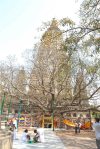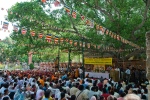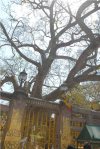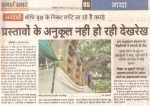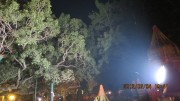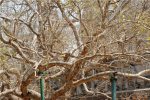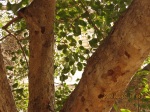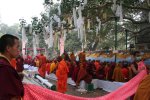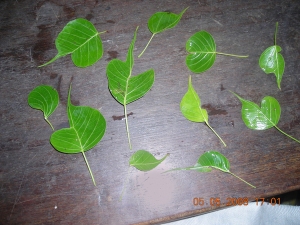READ THE DECISIONS OF THE WORLD HERITAGE COMMITTEE AND FIND OUT BY YOUR SELF WHO IS DOING WHAT FOR MAHABODHI TEMPLE AND DISRESPECTED BUDDHA
REPORT 2003 TO 2013
http://whc.unesco.org/en/list/1056/documents/
Current conservation issues
At the time of inscription of this property on the World Heritage List, the World Heritage Committee noted with concern the information from ICOMOS regarding intense pressure from tourism development and pilgrimage activities on-site. The Committee recommended that the Indian authorities develop a comprehensive management plan to ensure the conservation of the heritage values of the property, including provisions for regular monitoring and adequate mechanisms to control the impact of tourism and pilgrimage activities within and surrounding the property.
Since inscription on the World Heritage List, the Centre has received information from local NGOs and religious groups concerning vandalism and theft on site. Moreover, the Centre has been informed of a number of court cases that reflect some conflictual relationships between the religious groups using the property and occasionally the local communities, which reportedly resulted in fires and riots.
Reportedly, some groups have proposed that the management of the property be placed into the hands of Buddhist religious groups instead of the current local government authority.
27COM7B.46
The World Heritage Committee,
- Having examined the state of conservation of the property for the first time since its inscription on the World Heritage List in 2002,;
- Recalling the concern at the time of inscription regarding the tourism and pilgrimage pressures facing the property,;
- While noting that the absence of a functioning comprehensive management plan has persisted in spite of the Committee’s recommendation at the time of inscription of the property for the development of such plan (26 COM 23.16), expresses its appreciation to the State Party for commencing the elaboration of such a plan,;
- Expresses concern over the continuing tensions and occasional conflicts between local stakeholders, in particular the religious groups who wish to use this important religiousWorld Heritage property;
- Recognizing the associated heritage significance of the surrounding areas of the Mahabodhi Temple which are intrinsically linked to the enlightenment of Buddha, but which are not within the core nor the buffer zone of the existing World Heritage property,;
- Invites the State Party to enlarge the World Heritage protected area to ensure that the protective core and buffer zones are meaningful and effective for the conservation of the values of the property;
- Requests the State Party to complete the elaboration of a comprehensive management plan which adequately integrates:
(a) Local community and stakeholders’ dialogue and co-operation,
(b) Protection, conservation and preservation of the heritage value and assets of this sacred property,
(c) Control of development activities within and surrounding the property related to tourism and pilgrimage activities;
- Requests the State Party to submit to the World Heritage Centre by 1 February 2004 the completed comprehensive management plan in order that the World Heritage Committee can examine the state of conservation of the property at its 28th session in 2004.
http://whc.unesco.org/en/decisions/629
Committee Decisions
27 COM 7B.46
Mahabodhi Temple Complex at Bodh Gaya (India)
The World Heritage Committee,
- Having examined the state of conservation of the property for the first time since its inscription on the World Heritage List in 2002,;
- Recalling the concern at the time of inscription regarding the tourism and pilgrimage pressures facing the property,;
- While noting that the absence of a functioning comprehensive management plan has persisted in spite of the Committee’s recommendation at the time of inscription of the property for the development of such plan (26 COM 23.16), expresses its appreciation to the State Party for commencing the elaboration of such a plan,;
- Expresses concern over the continuing tensions and occasional conflicts between local stakeholders, in particular the religious groups who wish to use this important religiousWorld Heritage property;
- Recognizing the associated heritage significance of the surrounding areas of the Mahabodhi Temple which are intrinsically linked to the enlightenment of Buddha, but which are not within the core nor the buffer zone of the existing World Heritage property,;
- Invites the State Party to enlarge the World Heritage protected area to ensure that the protective core and buffer zones are meaningful and effective for the conservation of the values of the property;
- Requests the State Party to complete the elaboration of a comprehensive management plan which adequately integrates:
(a) Local community and stakeholders’ dialogue and co-operation,
(b) Protection, conservation and preservation of the heritage value and assets of this sacred property,
(c) Control of development activities within and surrounding the property related to tourism and pilgrimage activities;
- Requests the State Party to submit to the World Heritage Centre by 1 February 2004 the completed comprehensive management plan in order that the World Heritage Committee can examine the state of conservation of the property at its 28th session in 2004.
REPORT 2004 … http://whc.unesco.org/en/soc/1450
State of Conservation (SOC)
Mahabodhi Temple Complex at Bodh Gaya
Current conservation issues
As requested by the World Heritage Committee at its 27th session in 2003, a management document was submitted to the Secretariat on 2 February 2004. As well as covering the local stakeholders’ dialogues and co-operation, it raises issues concerning the protection of the significant sacred values of this property, and addresses developmentpressures within and surrounding the property due to tourism and pilgrimage-related activities, including vandalism and theft.
ICCROM and ICOMOS have submitted a joint report, which commends the State Party for the useful information gathered together in the preparation of the report and for the innovative approach embodied in efforts to balance development and conservation. It draws attention, however, to a number of points which must be addressed to ensure complete, long term protection of the World Heritage values of the property. Some of the key technical, conceptual and managerial issues are highlighted below:
(a) Technical issues:
(i) The inscribed World Heritage property is the Mahabodhi Temple complex. Whilst the attention to Bodhgaya, given its critical role in providing the setting for Mahabodhi, is important, the management document must address head-on the problems of looking after Mahabodhi and treat Bodhgaya in that context.
(ii) The management document is not significance driven. The statement of significance, is actually a descriptive summary of the inscription criteria recognised by the Committee and consequently an understanding of significance is not used to root or ground decisions concerning the property.
(iii) The management document does not build on the nomination dossier submitted by the State Party. The core area and buffer zone defined for the Bodhgaya territory differ substantially from the zones originally defined in the nomination dossier submitted by the State Party for inscription of the property on the World Heritage List. Expansion of the core zone and the changes proposed to strengthen the buffer zone must be clearly indicated and brought to the attention of the Committee for approval.
(b) Conceptual issues:
Bodhgaya as a centre of pilgrimage: The vision statement emphasises the need to make Bodhgaya a city preaching the doctrine of Buddhism, but the deeply rooted significance of the property as a place of pilgrimage has been overlooked. The nomination dossier, where this particular value should have been recognised only refers to tangible remains. Pilgrimage removes many barriers and reflects harmony among different religious groups and the fact that Buddha himself advocated pilgrimages to the Bodhgaya has been influential in the survival of the property to the present day. Paradoxically, in the body of the report, pilgrims are considered as important stakeholders with acknowledged needs.
(c) Managerial issues:
(i) Focus on Mahabodhi: The report reads as if it were a planning document prepared primarily for the long-term treatment and development of Bodhgaya as a centre for Buddhist worship, paying occasional attention to Mahabodhi as a side issue within a larger project. It is the Mahabodhi Temple Complex itself, and not Bodhgaya, which should have a primary place in the management plan.
(ii) Treatment of Bodhgaya: If the State Party wishes to extend the Mahabodhi property to include Bodhgaya, then this management document should propose a strategy to protect the specific heritage values of Bodhgaya to bring to the attention of the Committee.
(iii) Going beyond intentions: The report is essentially a statement of good intentions. If these are not grounded in a permanent legal framework and supported by a related management structure identifying the necessary resources for sustainable management, an adequate commitment to the protection of the property cannot be ensured.
(iv) Role of the Archaeological Survey of India (ASI): Currently the ASI does not have any legal control over decisions affecting the World Heritage property so it would be useful to establish legislation to designate the Mahabodhi Temple Complex a protected monument. The ASI should also provide the national outlook for the overall conservation programme working as shared partners in conservation with the other institutions concerned and the civil society.
(v) Treatment of the buffer zone: There are some contradictions evident in the management documen, which need to be resolved. For example, the document prohibits insensitive development, whilst accepting the recent introduction of many structures.
(vi) Emphasis on process: The management plan should clarify the long-term process to be used when making decisions about the property thus ensuring the survival of the recognized heritage values.
(vii) Research Strategy: Although there is a reference to excavation and conservation, no attempt has been made to develop an overall research strategy. This is a property in which an important event took place in the 6th century BC and evolved over 2500 years. There is a need to expand knowledge of this property. Furthermore, a comprehensive research strategy should be included as an essential part of the management.
(viii) Management Structure: Empowering and restructuring individual institutions is a positive approach but it is essential for an organisation with a powerful leadership to be created, in order to co-ordinate line agencies and capture the aspirations of civil society for the site management.
(ix) Monitoring: Although there are some aspects of monitoring mentioned under maintenance, it is important to develop a chapter on monitoring. This will help for reporting purposes as required by the World Heritage Committee’s Periodic Reporting process.
In conclusion, ICOMOS and ICCROM strongly recommend that the plan be subject to peer review by Indian conservation professionals and to the comments made above in this report and revised accordingly before final adoption for implementation. We would also draw the attention of the State Party to the need to demonstrate that a realistic and practical implementation strategy will actually be implemented with appropriate legal, financial and institutional support and within a management framework adequate to protect the heritage values of the property.
The Secretariat has been informed of several court cases reflecting some conflicting relationships between religious groups and local communities. In order to limit the impact of intense tourism and pilgrimage-related activities, regular monitoring and adequate conservation mechanisms need to be put in place. All such measures should be worked out with the Mahabodhi Temple Trust, in close co-operation with the State Government of Bihar, who deal with tourism and infrastructure, and with the wider involvement of the Central Government (Archaeological Survey of India) with its national outlook and technical expertise in heritage conservation.
At the Dedication Ceremony (dedicating the Mahabodhi Temple to all the Buddhists in the world) on 19 February 2004, the Minister of Culture and Tourism of the Government of India pledged Central Government support for infrastructure improvements in and around Bodhgaya (i.e. opening the airport to international flights) and for the creation of a meditation park for pilgrims to meditate in a calm environment.
Decision
28COM15B.57
The World Heritage Committee, 1. Recalling the concern at the time of inscription regarding the tourism and pilgrimage pressures facing the property, 2. Congratulates the State Party for initiating efforts to elaborate a comprehensive document relevant to the long-term conservation and management of the property; 3. Requests the State Party to pursue its efforts towards the finalisation of the current management plan for peer review by the Indian conservation professionals and taking into account the suggestions made by the Advisory Bodies in the joint ICCROM-ICOMOS paper, in particular focussing on: a) integrating a heritage values-sensitive approach to management, b) basing the document on protection of the inscribed Mahabodhi World heritage property, c) developing a realistic implementation strategy, d) including a peer review process within development of the plan; 4. Encourages the State Party to identify legal mechanisms to designate the Mahabodhi Temple Complex as a protected monument, to ensure maintenance of the buffer zone proposed by the State Part for Mahabodhi at the time of inscription, and to consider the possible extension of the core zone to include the Bodhgaya property; 5. Invites the State Party to organise a series of stakeholders’ interventions in the process of improving and finalising the management plan, and to submit a request for Technical Co-operation Assistance for this purpose; 6. Requests the World Heritage Centre and the Advisory Bodies to organise a first joint mission in order to assess the steps taken by the State Party to protect the World Heritage values of the property, and to submit its report for examination by the 29th session of the Committee in 2005.
REPORT 2005 … http://whc.unesco.org/en/soc/1312
State of Conservation (SOC)
Mahabodhi Temple Complex at Bodh Gaya
Current conservation issues ~
Following the request of the 28th session of the Committee (Suzhou, 2004), a joint mission was undertaken by ICOMOSand WHC from 21 to 27 April 2005 in order to assess the steps taken by the State Party to protect the World Heritage values of the property.
The joint ICOMOS/WHC mission examined a number of approaches for the management of this property. These included the approach developed by HUDCO (Housing and Urban Development Authority) in consultation with the ASI (Archaeological Survey of India) over the last 18 months and reflected in the documents made available to the mission, “Mahabodhi Temple Complex World Heritage Property: Site Management Plan” (both the document itself and a hard copy of the accompanying power point presentation), “Heritage Led Perspective Development Plan for Bodhgaya, Vision 2001-2031: The Plan ”, and “Heritage Led Perspective Development Plan for Bodhgaya, Vision 2001-2031: The Work Studies”. An alternative approach based on the protection of the World Heritage values of the property was also presented by a heritage conservation expert. Following discussions in Delhi and Bodhgaya as well as an on-site visit to the property and its surroundings, the mission made the following observations:
a) Progress made in refining the Site Management Plan prepared by HUDCO:
The HUDCO Site Management plan (April 2005) constitutes an admirable attempt to synthesize analysis around key development and conservation issues and to present recommendations for planning action to strengthen care of the property and adjoining buffer zones. However, as noted by the authors of the report, at this stage the Site Management Plan remains an advisory document containing only guideline suggestions for improvement. The mission also noted substantial weaknesses in the document particularly in the definition and elaboration of the property’s Outstanding Universal Value, and that while there are many useful recommendations for enhanced control in the buffer zone of the Mahabodhi Temple Complex, until these are adopted and incorporated in the Development Plan proposed for Bodhgaya, these recommendations are not yet in force.
ICOMOS recommends that work on the Site Management Plan be suspended until such time as all necessary conditions for implementation of the plan are in place.
b) Need to establish an appropriate management mechanism:
The final part of the Site Management Plan document focuses on the “institutional mechanism for plan implementation”. Recognizing that the authority of the BTMC (Bodhgaya Temple Management Committee), while established statutorily in 1949, is limited to the Mahabodhi Temple Complex area, and that control of the proposed buffer zone can only be achieved with commitment of adjacent landowners, the report explores various integrated management mechanisms, from strengthening of the BTMC to creation of a new World Heritage management authority.
c) Need for an appropriate legal protection framework at both national and state levels to support the Site Management Plan:
While management of a World Heritage property normally calls for the highest possible protection at national level, in the present case the ASI feels strongly that national designation involving “monument protection” would be counterproductive, given the importance of the property as living religious heritage. Equally, the State Government of Bihar believes that with the BTMC playing a statutory role, there is no need for State level notification. The State Government is however prepared to extend its development control authority over the buffer zone through measures proposed in the Bodhgaya Development Plan.
d) Controls to be in place within the buffer zones proposed by the State Party at the time of inscription:
The HUDCO Site Management Plan document elaborates controls to be placed on development within the buffer zones identified at the time of inscription. The one km. radius buffer zone is broken into two “special areas”, one permitting no development within approximately 0.5 km from the Temple Complex, and the second limiting development to one storey between 0.5 km and one km away from the temple. The boundaries of the two inner buffer zones have been adjusted to suit ground conditions, and proposed control provisions within clarified and strengthened. A “further periphery” zone extending beyond the one km buffer zone to two km on the Temple side of the river is also identified. These provisions, as they involve a change to the buffer zone definition and protective regime proposed at the time of inscription should be reported to the World Heritage Committee, once adopted within the Development Plan for Bodhgaya.
e) Feasibility of the extension of the inscribed property to include the surrounding cultural landscape associated with the presence and enlightenment of the Lord Buddha in the region:
The mission observed importance of giving consideration of the possible long-term extension of this property beyond the Mahabodhi Temple Complex, to include the surrounding cultural landscape directly associated with the enlightenment of the Lord Buddha. The strengthening of the buffer zone boundary definitions and control provisions within the Development Plan for Bodhgaya provides a welcome measure of control over a large area outside the inscribed Mahabodhi Temple Complex. If adopted, these controls will ensure strong protection of the Outstanding Universal Value recognized by inscription, and will also ensure maintaining the character of the immediately adjacent cultural landscape. It would be useful, in considering the consequences of a possible future extension, to assess the extent of the landscape beyond the buffer zone and periphery zones described above, to identify those segments of the vernacular landscape associated with all facets of the Lord Buddha’s search for, and attainment of enlightenment, including the Pragbodhi Hill, adjacent river banks etc.
f) The mission also noted the importance of the peer review process identified by the Committee at its 28th session (Suzhou, 2004) and requested of the State Party. The peer review was carried out by two Indian professionals in March 2005. Their report was provided by the ASI to the UNESCO mission on 27 April 2005.
The State Party was also invited by the Committee at its 28th session (Suzhou, 2004) to organise a series of stakeholder interventions in the process of improving and finalising the Management Plan. The authors of the Site Management Plan have described strong efforts on their part to include stakeholders at all levels within Bodhgaya in their consultation process.
The mission was made aware of a certain number of illegal encroachments taking place in the immediate vicinity of the inscribed property. While State and local authorities are taking measures to deal with these encroachments, it would be useful to accurately document existing conditions throughout the inscribed property, buffer zones and periphery zones, to provide a benchmark for future monitoring and reference.
Decision
29COM7B.52
The World Heritage Committee,
- Having examined the Document WHC-05/29.COM/7B.Rev,
- Recalling its Decision 28 COM 15B.57 adopted at its 28th session (Suzhou, 2004),
- Congratulates the State Party of India for the extensive efforts involved in putting together documents for the management plan of the property and organizing the joint World Heritage Centre/ICOMOS mission of April 2005;
- Requests the State Party to:
a) Adopt the provisions of the Site Management Plan of April 2005 within the Bodhgaya Development Plan being prepared by the Bihar State Government, including those that touch the extent of, and controls within the Bodhgaya buffer zone and periphery zone;
b) Explore an appropriate management mechanism for the property to protect its outstanding universal value as well as the values of the adjacent buffer and periphery zones;
c) address the weaknesses identified by the joint World Heritage Centre/ICOMOS Mission of April 2005 in the present Management Plan document (April, 2005), particularly those related to description of the property’s outstanding universal value;
d) Establish appropriate forms of support, control and involvement at both national and state levels to put in place the management mechanism described in b) above; and
e) Prepare a detailed property documentation of existing conditions within buffer and periphery zones, as a basis for future monitoring.
- Encourages the State Party to explore the appropriateness of a long term extension of the Mahabodhi Temple Complex inscription to include the cultural landscape identified with the wanderings and enlightenment of the Lord Buddha in this region, and possibly to include other properties associated with the life of the Buddha in India, for example, Sarnath (currently on the Indian national tentative list);
- Invites the State Party to give further consideration to the possible designation of the property under national legislation in order to ensure protection of its outstanding universal value as well as its authenticity and integrity;
- Requests the State Party to submit a report to the World Heritage Centre, by 1February 2006, on the progress made in the implementation of the above recommendations, for examination by the Committee at its 30th session (Vilnius, 2006).
REPORT 2006 … http://whc.unesco.org/en/soc/1184
State of Conservation (SOC)
Mahabodhi Temple Complex at Bodh Gaya
Analysis and Conclusion
The progress report, submitted by the State Party on 31 March 2006, provides brief information on the steps taken by the authorities in response to the recommendations made by the 29th session of the Committee (Durban, 2005).
The report states that the Bodhgaya Development Plan, entitled the “Heritage Led Perspective Development Plan of Bodhgaya, Vision 2031”, has been discussed with local stakeholders following the request of the Committee to adopt the provisions of the Site Management Plan of April 2005 within the development plan. The Gaya regional development authority is presently revising the Plan by incorporating the issues raised by local stakeholders with a view to finalising the document. The zoning proposed in the management plan has been incorporated into this development plan which also includes a focus on heritage protection. ICOMOS notes that a management plan and a development plan have different goals, and that it is important to define the relationship between them in ways that shall ensure that the protection of the outstanding universal value of the property is the basis for all decision-making in both plans.
Furthermore, the State Party reports that the Bodhgaya Development Plan includes heritage guidelines for the town that are to be followed by all major construction projects, notably a height control for buildings, as well as a ban on construction within the World Heritage boundaries and its buffer zone. At present, until the Bodhgaya Development Plan is approved and implemented by the State Government, any construction carried out within the designated World Heritage property area is being banned. However, in the context of the illegally approved constructions noted by the UNESCO/ICOMOS mission in 2005, the State Party has not reported whether the ban on construction is respected.
The State Party’s efforts to implement the Committee’s decisions concerning the management plan are commendable. However, ICOMOS recommends that the implementation of this plan should be further monitored to ensure that the concerns expressed in the joint World Heritage Centre-ICOMOS mission of 2005 are fully addressed, particularly those related to the recognition of the outstanding universal value of the site, and that a timeframe should be set in this regard.
In response to the Committee’s request thatappropriate management mechanisms be explored, the State Party reports that the capacity of the existing agency, the Bodhgaya Temple Management Committee (BTMC), is presently being strengthened in co-operation with the State Government of Bihar and the Central Government. The State Party underlines that a consensus on the management mechanism needs to be established amongst the different interest groups and stakeholders before any major change can be made in the present management system. ICOMOS reinforces the importance of this point and of ensuring full participation of the BTMC in the finalization of the management plan.
The report further mentions that detailed property documentation of existing conditions within buffer and periphery zones, as a basis for future monitoring, has been initiated and is expected to be completed by end July 2006. No specific details concerning the progress of this work have been provided in the report.
Regarding the invitation by the Committee to explore the appropriateness of an extension of the Mahabodhi Temple Complex nomination to include the cultural landscape that is identified with the wanderings and enlightenment of the Lord Buddha in this region, the State Party considers that detailed archaeological surveys and excavations are required to determine the locations and extent of specific associated sites, and that the issue of the extension of the property can only be considered once this work has been completed. ICOMOS regards the area in question as a large cultural landscape, which may be defined without the need for archaeological analysis and comments that the State Party should give this issue the highest priority as this area is inextricably linked with the outstanding universal value of the property, and a delay in including the related landscape as an essential part of an extended nomination puts its survival at risk.
Regarding the possible designation of the property under national legislation, the State Party reports that the living religious nature of the site makes it necessary to initiate a process of consensus-building around any move to national legislation. This process is presently underway, notably at the local level. ICOMOS underlines the importance of the Government of India providing for sites inscribed on the World Heritage List the highest level of national legal protection, as is the case with other religious properties on the World Heritage List.
Decision
30COM7B.64
The World Heritage Committee,
- Having examined Document WHC-06/30.COM/7B,
- Recalling Decision 29 COM 7B.52, adopted at its 29th session (Durban, 2005),
- Recognises the efforts and progress made by the State Party to respond to the requests made at the 29th session (Durban, 2005);
- Encourages the State Party to continue its efforts to adopt and implement the provisions of the management plan of April 2005 within the Bodhgaya Development Plan, if possible by 1 February 2007;
- Invites the State Party to request assistance from the World Heritage Centre and the Advisory Bodies to advance the implementation of the management plan, and to ensure the protection of the outstanding universal value of the property, as well as of the adjacent buffer and periphery zones;
- Reiterates its recommendation to the State Party to undertake all necessary actions to ensure the nomination of the related landscape identified with the wanderings and enlightenment of the Lord Buddha in this region as an extension to the Mahabodhi Temple Complex;
- Strongly recommends that the State Party, as a matter of priority, follow-up on the possible designation of the property under national legislation;
- Requests the State Party to submit to the World Heritage Centre by 1 February 2007, a detailed report on the progress made on the above points, for examination by the Committee at its 31st session in 2007.
REPORT 2007 …. http://whc.unesco.org/en/soc/1024
State of Conservation (SOC)
Mahabodhi Temple Complex at Bodh Gaya
Factors* affecting the property identified in previous reports
General threats:
a) Lack of co-ordinated and integrated management system;
b) Lack of detailed property documentation;
c) Increasing numbers of visitors.
Specific threats:
d) Loss of character of the cultural landscape directly associated with the property and its outstanding universal value;
e) Lack of protection under national legislation.
Current conservation issues
The State Party submitted a report on the state of conservation of the World Heritage property on 27 January 2007. The report comments in detail on measures undertaken by the State Party to improve management of the property. These include:
a) Creation of an “Expert Advisory Committee” to assist with implementation of the site management plan. This group has met twice and made useful recommendations on a number of technical points;
b) Adoption of the site management plan of April 2005 by the Bodhgaya Temple Management Committee (BTMC), and ratification by the multi-stakeholder Advisory Board of the BTMC on 8 November 2006;
c) Adoption of the “Heritage led perspective development plan for Bodhgaya, Vision 2005-2031″ by BTMC’s Advisory Board on 8 November 2006 and also by the Gaya Regional Development Authority on 12 December 2006. The State Party report notes that the zoning proposed in the site management plan for core, buffer and periphery zones have been included in the development plan. The State Party also notes that the Gaya Regional Development Authority has submitted the Vision 2005-2031 document to the state government of Bihar for final approval and notification, and that approval is expected by 15 February 2007;
d) Adoption of construction ban within prescribed zones, along with legal actions;
e) Efforts to improve security of the Temple premises by the BMTC in accordance with the provisions made in the site management plan;
f) Further efforts to ensure technical strengthening of the BMTC committee and the establishment of a heritage reserve fund, to be utilized for the conservation and maintenance of the Temple Complex.
In relation to recommendations made by the World Heritage Committee at its 28th (Suzhou, 2004), 29th (Durban, 2005) and 30th (Vilnius, 2006) sessions to ensure the nomination of the related landscape identified with the wanderings and enlightenment of the Lord Buddha in this region as an extension to the Mahabodhi Temple Complex, the State Party notes that funds are being sought from the Government of India to develop an “information base including GIS mapping of the surrounding regions” to facilitate finalizing a proposal for the extension of the property.
In response to previous recommendations made by the World Heritage Committee that the State Party, “as a matter of priority, follow-up on the possible designation of the property under national legislation”, the State Party report emphasizes that “technical support for conservation of Mahabodhi Temple and other ancient structures is extended by the Archaeological Survey of India, as and when required by the BTMC”. It is also noted that the Temple is now managed under a special act of the State Government of Bihar and could also be brought under the Archaeological act of the State Government of Bihar to further enhance the requisite protection of the site, and its authenticity, integrity and outstanding universal value.
In relation to site management, it is noted:
(i) That the State Party should inform the Committee whether the confirmation of approval of “Bodhgaya Vision 2005-2031” by the Gaya Regional Government, expected February 2007, has been received.
(ii) While the efforts to integrate provisions of both documents are appreciated, it is suggested that the State Party confirm the primacy of the site management plan, should there be any conflict between the Vision 2005-2031 development plan and the site management plan.
(iii) ICOMOS and the World Heritage Centre note the efforts to ban new construction until the development plan is fully adopted, and to take legal action if required. It would be appreciated if the State Party could confirm that illegal constructions which are numerous, and in many cases very offensive, will all be removed from the World Heritage site and its buffer zone.
In relation to extending the nomination to include the surrounding cultural landscape, it is noted, as last year, that the activities intended to be undertaken by the State Party prior to inclusion of the surrounding cultural landscape (2006: detailed archaeological surveys and excavations, 2007: GIS data base), are not critically important for adequately defining an associative cultural landscape of this scale and importance. ICOMOS would like to stress again that the State Party should give the extension of the site the highest priority, given that this cultural landscape is inextricably linked with the outstanding universal value of the property, and that any further delay in including the related landscape as an essential part of an extended nomination puts its survival at risk.
In relation to protecting the site under national legislation, ICOMOS and the World Heritage Centre again emphasize that while recognizing the difficulties of extending national legislation to a living religious site, and the importance of strengthening protective measures at State level, that a site of World Heritage status deserves to be recognized nationally and offered the benefit of all possible national level support and protection. It is suggested that efforts in this direction be combined with efforts to extend and redefine the World Heritage property to include the associated cultural landscape.
Decision
31COM7B.82
The World Heritage Committee,
1. Having examined Document WHC-07/31.COM/7B;
2. Recalling Decision 30 COM 7B.64, adopted at its 30th session (Vilnius, 2006);
3. Notes with satisfaction that the State Party has adopted the site management plan and the “Heritage led perspective development plan for Bodhgaya, Vision 2005-2031″ and its continuing efforts to develop management mechanisms which fully and effectively integrate all stakeholders in protecting the Outstanding Universal Value of the World Heritage property;
4. Encourages the State Party to inform the World Heritage Committee concerning the following aspects of the implementation of the site management plan:
a) confirmation of the adoption of the Vision 2005-2031 development plan by the Gaya Region, in integrating relevant provisions of the site management plan;
b) commitment of the authorities to continue to enforce the ban on construction at the property;
5. Strongly urges the State Party to re-submit the property for inscription as a cultural landscape at the very earliest opportunity before the character of this important landscape, directly associated with both the life and wanderings of Buddha and the Mahabodhi Temple, is irretrievably lost;
6. Suggests that the State Party use the occasion of the resubmitted nomination to ensure national protection of the entire extended property;
7. Requests the State Party to submit a report to the World Heritage Centre on 1 February 2009 on its progress in responding to the requests made above, for examination by the Committee at its 33nd session in 2009.
REPORT 2010 … http://whc.unesco.org/en/soc/508
State of Conservation (SOC)
Mahabodhi Temple Complex at Bodh Gaya
Current conservation issues
On 5 February 2010 a report on the state of conservation of the property was submitted by the State Party. This report covered management and visitor related issues, conservation works carried out at the property, the state of progress on the implementation of the management plan, and a report on the health of the Bodhi Tree. The report also included a copy of the legal act protecting the property at the Bihar State level, and the minutes of the annual meetings of the Expert Advisory Committee on Mahabodhi Temple from 2005 to 2009.
a) Confirmation of the adoption of the Vision 2005-2031 Development Plan by the Gaya Region, integrating relevant provisions of the site management plan
The State Party report indicates that the site is being managed by the Bodhgaya Temple Management Committee (BTMC) under the Bodhgaya Temple Act of 1949. There is also an Expert Advisory Committee on Mahabodhi to give regular advice to the management committee on activities to be undertaken. In specific reference to the request by the World Heritage Committee in regard to ensuring that the management plan has been integrated into the larger 2005 – 2031 Development Plan, the State Party report states clearly that all development activities in Bodhgaya, including those related to tourism management, are now guided by the management plan. The report further states that the level of visitors remains on the increase. There are, however, no indications as to how this increased visitor flow is being dealt with, and the annexed minutes of the Expert Advisory Committee indicate that work has not yet been initiated for the improvement of signage and visitor information at the site.
The Advisory Bodies and the World Heritage Centre welcome this confirmation by the BTMC that the site management plan is now being used as a guideline for development at the Temple complex and in Bodhgaya. It is not always clear, however, how the decisions taken by the Expert Advisory Committee (as found in the minutes provided), conform to the management plan. Concerns also still remain in regard to the management of the increasing number of pilgrims and other visitors to the site.
b) Commitment of the authorities to continue to enforce the ban on construction at the property
The State Party report states clearly that all development activities in Bodhgaya are now guided by the management plan, which states along with the development plan that no new construction should take place within the World Heritage property, and that very limited development related to religious and related usage can be allowed in the buffer zone. However, no indications as to the commitment of the authorities to continue to enforce the ban on construction at the property was contained in the State Party report as requested by the Committee at its 31st session.
c) Conservation issues (including the state of the Bodhi Tree)
The State Party report provides a short update on completed and ongoing conservation and restoration of specific elements within the temple compound. There is mention within the Expert Advisory Committee minutes to proposals for new boundary railings and carved panels showing the life of the Buddha, for which advice from the World Heritage Centre and the Advisory Bodies would be sought. There is also extensive information on the health of the Bodhi tree, which has improved in the past three years with proper attention.
The Advisory Bodies and the World Heritage Centre welcome the ongoing conservation works that have been carried out at the property in cooperation with the Archaeological Survey of India (ASI). The State Party reports, however, does not provide enough information on the conservation work carried out or on the proposed additional elements (railings and panels) referred to in the Expert Advisory Committee minutes. There also remains some concern about the use of appropriate materials for conservation and repair work.
d) Protection of the landscape surrounding the property including by the submission of a re-nomination for the inscription of an extended area as a cultural landscape
Due to the importance of the property within its larger cultural landscape associated with the life of Buddha, the World Heritage Committee at its 31st session (Christchurch, 2007), strongly urged the State Party to submit a nomination for the property as a cultural landscape incorporating not only the temple complex but the surrounding landscape. There was no information in the state of conservation report submitted by the State Party on this issue.
As stated in previous reports, the World Heritage Centre and the Advisory Bodies consider that the extension of this property to include its landscape is an important objective in order to capture additional aspects that would enhance the Outstanding Universal Value and to allow for the protection of this significant landscape. Recognising that it is the prerogative of the State Party to decide whether or not to re-nominate an extended property, the World Heritage Centre and the Advisory Bodies consider that it would be useful to further discuss this issue with the State Party in the context of any missions to the site and/or of the Periodic Reporting process,
e) Legal Status of the property
Although not contained in the body of the State of Conservation Report, the annexed minutes of the Expert Advisory Committee on Mahabodhi Temple, dated July 2009, mention that no progress has been made on the request by the World Heritage Committee to have the site protected at the national level in addition to the state protection.
Given its status as a World Heritage property, the World Heritage Centre and the Advisory Bodies continue to consider that the declaration of the property as a national monument would give additional protection. It may be, however, that the State Party and the BTMC feel that the current legal protection under Bihar State law is sufficient with the ASI being called in for conservation works. This is an issue that should be further explored in consultation with the State Party, the BTMC, the World Heritage Centre and the Advisory Bodies possibly in the context of a mission.
In conclusion, the World Heritage Centre and the Advisory Bodies welcome progress made by the BTMC at the property. It should be emphasized, however, that as requested in the mission report from 2005, a retrospective Statement of Outstanding Universal Value is needed to guide conservation and management decisions. Attention should also be called to the need to ensure that decision-making by both the BTMC and Expert Advisory Committee is in conformity with the management plan, and that proper advice is sought on conservation activities and any new proposals for the property. For this reason, a mission would be useful in 2011 with the aim of discussing with the State Party and BTMC the progress made on the site to date, and to clarify the feasibility of earlier recommendations of the World Heritage Committee for national legal protection and an extension to the property.
Decision
34COM7B.70
The World Heritage Committee,
- Having examined Document WHC-10/34.COM/7B,
- Recalling Decision 31 COM 7B.82, adopted at its 31st session (Christchurch, 2007),
- Notes with satisfaction that the State Party has confirmed that all development activities coming within the approved “Vision 2005-2031 Development Plan” are being guided by the provisions of the Site Management Plan for the property and encourages the State Party to continue the implementation of the Site Management Plan and the Development Plan 2005-2031;
- Reiterates its request to the State Party to consider re-nominating the property as a cultural landscape, as already suggested at its 31st session (Christchurch, 2007), to enhance the Outstanding Universal Value and protect the character of the important landscape directly associated with both the life and wanderings of Buddha and the inscribed Mahabodhi Temple site;
- Requests the State Party to explore the possibility of improving the legal protection of the property by declaring the property a national monument;
- Also requests the State Party to invite a joint World Heritage Centre/ICOMOS/ICCROM reactive monitoring mission to the property in 2011 with the aim of discussing with the State Party and the Bodhgaya Temple Management Committee (BTMC) the progress made at the site to date, as well as to clarify the feasibility and possible modalities of implementation of the above recommendations;
- Further requests the State Party to submit to the World Heritage Centre on 1 February 2012 an updated report on the state of conservation and progress made in responding to the requests made above, for examination by the World Heritage Committee at its 36th session in 2012.
REPORT 2011
World Heritage Patrimoine mondial 36 COM
Distribution limited / limitée Paris, 29 March / 29 mars 2012 Original: English
UNITED NATIONS EDUCATIONAL, SCIENTIFIC AND CULTURAL ORGANIZATION ORGANISATION DES NATIONS UNIES POUR L’EDUCATION, LA SCIENCE ET LA CULTURE
CONVENTION CONCERNING THE PROTECTION OF THE WORLD CULTURAL AND NATURAL HERITAGE CONVENTION CONCERNANT LA PROTECTION DU PATRIMOINE MONDIAL, CULTUREL ET NATUREL
WORLD HERITAGE COMMITTEE / COMITE DU PATRIMOINE MONDIAL
Thirty-sixth session / Trente-sixième session Saint Petersburg, Russian Federation / Saint Pétersbourg, Fédération de Russie
24 June – 6 July 2012 / 24 juin – 6 juillet 2012
Item 7 of the Provisional Agenda: State of conservation of properties inscribed on the World Heritage List and/or on the List of World Heritage in Danger.
Point 7 de l’Ordre du jour provisoire: Etat de conservation de biens inscrits sur la Liste du patrimoine mondial et/ou sur la Liste du patrimoine mondial en péril
MISSION REPORT / RAPPORT DE MISSION
Mahabodhi Temple Complex at Bodh Gaya (India) (C 1056 rev)
Ensemble du temple de la Mahabodhi à Bodhgaya (Inde) (C 1056 rev)
21-27 February 2011
This mission report should be read in conjunction with Document:
Ce rapport de mission doit être lu conjointement avec le document suivant:
WHC-12/36.COM/7B
REPORT ON THE JOINT WORLD HERITAGE CENTRE / ICOMOS/ICCROM
REACTIVE MONITORING MISSION TO THE WORLD HERITAGE PROPERTY OF MAHABODHI TEMPLE COMPLEX AT BODH GAYA
(INDIA, C 1056 rev) 21-27 February 2011
Authors
Feng JING (UNESCO World Heritage Centre)
Gamini Wijesuriya (ICCROM)
Augusto Villalon (ICOMOS International)
REPORT ON THE MISSION TO Mahabodhi Temple Complex at
Bodhgaya (India,) from 21 to 27 February 2011
TABLE OF CONTENTS
ACKNOWLEDGEMENTS
EXECUTIVE SUMMARY AND LIST OF RECOMMENDATIONS (1-2 pages max)
(Please note: This section should be written for use as the official State of Conservation report draft working document to the World Heritage Committee.)
Report length 10-15 pages plus annexes
1 BACKGROUND TO THE MISSION
Inscription history
Inscription criteria and World Heritage values
Integrity issues raised in the ICOMOS/IUCN evaluation report at time of inscription
Examination of the State of Conservation by the World Heritage Committee and its Bureau (refer to previous State of Conservation reports etc.)
Justification of the mission (terms of reference, itinerary, programme and composition of mission team provided in Annex)
2 NATIONAL POLICY FOR THE PRESERVATION AND MANAGEMENT OF THE WORLD HERITAGE PROPERTY
Protected area legislation
Institutional framework
Management structure
Response to the recognition of values under international treaties and programmes (World Heritage Convention, Biosphere Reserve etc.)
3 IDENTIFICATION AND ASSESSMENT OF ISSUES / THREATS
Management effectiveness,
Nature and extent of threats to the property, taking into consideration the natural values for which the property was inscribed and specific issues outlined by the World Heritage Committee,
Positive or negative developments in the conservation of the property since the last report to the World Heritage Committee,
Information on any threat or damage to or loss of outstanding universal value, integrity and/or authenticity for which the property was inscribed.
4 ASSESSMENT OF THE STATE OF CONSERVATION OF THE PROPERTY
Review whether the values, on the basis of which the property was inscribed on the World Heritage List, and the conditions of integrity are being maintained,
Review any follow-up measures to previous decisions of the World Heritage Committee on the state of conservation of the property and measures which the State Party plans to take to protect the outstanding universal value of the property.
5 CONCLUSIONS AND RECOMMENDATIONS
Recommendations for any additional action to be taken by the State Party, including draft recommendations to the World Heritage Committee
Whenever further action is needed, clear benchmarks indicating the corrective measures to be taken in order to achieve significant improvement of the state of conservation and a timeframe within which the benchmarks will have to be met
Recommendation as to whether the level of threats to the property warrants the property being removed from the List of World Heritage in Danger
6 ANNEXES
Terms of reference
Itinerary and programme
Composition of mission team
List and contact details of people met
Maps (most recent maps of the boundaries of the property)
Photographs and other graphical material (showing issues of integrity)
ACKNOWLEDGEMENTS
The Joint World Heritage Centre/ICOMOS/ICCROM monitoring mission to the World Heritage property of the Mahabodhi Temple Complex at Bodhgaya has been kindly coordinated by the distinguished representatives of the national and state Governments of India and the site management body, as well as experts who provided important information to the mission. The mission members would like to express sincere thanks to all those officers and experts who have kindly accompanied the team during the valuable discussions and on-site visits to the property. Our gratitude also goes to the representatives from the Citizens Forum, NGOs such as Hotel Association, International Buddhist Council (IBC) at Bodhgaya, and the media who kindly provided information to the mission team.
Archaeological Survey of India (ASI)
Dr Gautam Sengupta, Director-General
Mr Praveen Srivastava, ADG, ASI
Dr B. R. Mani, Joint Director-General, ASI
Mr Janhwij Sharma, Director of Conservation, ASI
Mrs Radhika Dhumal, Consultant Conservation Architect, ASI
Mr Sanjay Kumar Manjul, Superintendent Archaeologist, ASI Patna Circle Office,
Bodhgaya Temple Management Committee (BTMC)
Ms Bandana Preyashi, District Magistrate, Gaya cum, Chairperson, BTMC
Mr Nangzey Dorjee, Member Secretary of BTMC
Ven Bhikkhu Chalinda, Chief Monk, Mahabodhi Temple
Ven Deenananl, Care Taker, Mahabodhi Temple
All other BTMC members who attended the Stakeholders consultation meetings and
accompanied the mission during field visits.
State Government of Bihar (Patna)
Mr Anup Mukerji, Chief Secretary
Mr Vivek Kumar Singh, Commissioner of Magadh Division
Mr K.C. Saha, Development Commissioner
Principle Secretary, Home Department
Principal Secretary, Department of Culture
Principla Secretary, Department of Tourism
Principal Secretary, Department of Urban Development
UNESCO Office in New Delhi
Mr Armoogum Parsuramen, Director
Mr Takahiko Makino, Programme Specialist for Culture
Ms Paromita De Sarkar, Project Manager
Ms Shalini Mahajan, Project Manager
EXECUTIVE SUMMARY & CONCLUDING RECOMMENDATIONS
In accordance with World Heritage Committee Decision 34 COM 7B.80 (Brasilia, July 2010), a Joint World Heritage Centre/ICOMOS/ICCROM reactive monitoring mission was carried to Mahabodhi Temple Complex at Bodh Gaya (India, C 1056 rev) from 21 to 27 February 2011.
The mission discussed with the State Party and Bodhgaya Temple management Committee (BTMC) the progress made at the site to date and identified specific corrective measures to address the threats in the previous reports/missions.
Having examined the state of conservation of the World Heritage property, as well as the institutional and legal framework within which the property is conserved and managed, the mission concluded that the State Party of India have made efforts to respond to the concerns expressed and requests by the World Heritage Committee. The mission, however noted that a number of important conservation and management issues remain to be addressed to ensure a better protection and management of the World Heritage property and its Buffer Zone.
In general terms, the Mahabodhi Temple Complex at Bodh Gaya World Heritage property appears to be retaining its Outstanding Universal Value. The Temple compound seems to be large enough to physically accommodate the day-to-day small changes that have occurred so far from the religious activities. Regular maintenance work and restorations being carried out, while demonstrating the State Party and Site Management Authority’s strong and positive intention to preserve the property, nevertheless further enhancement is required to ensure the authenticity and the integrity of the property is retained.
The mission would nevertheless underline the conservation issues for the property from a broader context in view of the proposed extension of the property by the State Party as a Cultural Landscape. A strategic vision for the protection and management of the property as a living heritage site is needed to ensure a value-based approach for urban and rural planning, heritage protection and management. The mission witnessed some of the infrastructure development projects around the property, which were being implemented at a fast pace, and noted with some concern, for the potential pipeline development projects under discussion and/or planning.
The Mission’s findings have resulted in the following concluding recommendations. These recommendations have been based on the assessment of progress made the State Party to address the conservation issues identified by the World Heritage Committee, as well as other general policy directions and observations:
Concluding Recommendation concerning a strategic vision
5.1 A shared, balanced vision is required, which integrates heritage conservation and community development needs for the short and longer term. Considering the future extension of the World Heritage property to include other component parts in the Cultural Landscape, a co-ordinated long term vision for the conservation and management of Bogh Gaya as a living heritage site needs to be elaborated through meaningful stakeholder consultation, where a holistic values-based approach on urban and rural development and World Heritage protection and management is adopted by all concerned, especially the citizens and religious communities of BodhGaya.
Concluding Recommendation on property boundary and Buffer Zone
5.2. As discussed and agreed by the Chief Secretary and his staff during the discussions, a new holistic approach with planning authorities and relevant stakeholders are required to commence work who will initially work with existing Boundaries of the property and define a Buffer Zone for the property. The overall management of the World Heritage property will be integrated into the planning process. This should therefore address some of the following issues with regard to boundaries and Buffer Zone: a) Redefinition of boundaries with stakeholder consultations for greater understanding and participation for all parties to jointly determine all requirements within Buffer Zone; b) to reverse the misconception that World Heritage is restrictive, introduce a proactive vision of World Heritage and c) Necessary regulatory measures for the Buffer Zone should be established and implemented as a matter of priority. Based on the new Buffer Zone and considering the existing boundaries, Management Plan should be revised. If necessary, as stated by the Chief Secretary, action can be taken to strengthen the provisions of the BTMC Act to provide more power.
Regional planning authorities should revisit their plans based on the new boundaries and the Management plan with a view to help maintain the Outstanding Universal Value, to reduce any future pressures, to facilitate the pilgrims and to bring benefits of the place to the local community. It was agreed that Buffer Zone planning will be undertaken under the lead of the Bihar State Development Commissioner’s Office who will conduct consultations with all stakeholders to achieve a shared sense of strategic direction among all parties. The revised plan is to be submitted by November 2011 to ASI in the framework of the on-going second cycle of Periodic Reporting for Asia and the Pacific region.
Concluding Recommendation on Management Planning
5.3 Based on the Management Plan and also the revised regional development plan, establish more amenities, introduce other attractions within the Buffer Zone to diffuse heavy pilgrim load on Mahabodhi Temple, especially during festival periods. Also measures need to be taken to improve facilities and amenities (lodging, food, transportation, etc) for pilgrims at all levels.
5.4 As part of the Management planning process, conduct a year long study of the patterns of pilgrimages to understand pressures, if any, at any given time that can affect the Outstanding Universal Value of the property and to develop strategies to mitigate them.
Re-nominating of the property as a Cultural Landscape
5.5 In fact, the present urban congestion prevent the consolidation of the large area around Mahabodhi Temple as a Buddhist Cultural Landscape to be nominated for World Heritage listing. However, a serial nomination where a number of sites associated with the Lord Buddha is a more feasible approach. Moreover, the Cultural Landscape nomination is not in the priorities of the State Government of Bihar authorities whose focus is to improve infrastructure in Bodh Gaya and to complete the planning of the Buffer Zone.
Therefore, the proposal of re-nominating the property as a Cultural Landscape could be left to the national authorities for further studies and future actions
5.6 It appears that greater emphasis on coordination and communication between amongst different stakeholders, including the religious community is lacking. A clearer understanding on the requirements for World Heritage protection and management should be ensured while putting forward management structure for the property. Strengthening the BTMC expertise on the understanding of the OUV and the means and ways to maintain it would be essential. At the same time, ASI could have a regular liaising with the BTMC and its Expert Committee on Conservation. BTMC can be encouraged to apply for International assistance through the World Heritage Fund
5.7 Enhance, particularly municipal / Panchayat level in bodhgaya, awareness building in relation to World Heritage conservation processes, internationally recognized conservation standards and procedures, as well as timely information dissemination to the general public and citizens. There is a need to improve ways of information sharing and communication on conservation programmes and the World Heritage property through better publicity and other promotional activities on the importance of this sacred World Heritage site.
Enhancing the Management system, public communication and outreach
5.8 The BTMC deserves commendation for the good overall state of conservation of Mahabodhi Temple that is under its direction by virtue of the Bodh Gaya Temple Act of 1949. ASI has likewise done well in maintaining the temple. Although adequate measures have been taken by BTMC to decongest pilgrim traffic centered at the main Temple and Bodhi Tree by providing dispersal areas within the limited area of the complex, management of the extreme number of pilgrim arrivals during festivals held at special times of the year is difficult. Providing secondary pilgrimage destinations located in the Buffer Zone will help to further disperse pilgrims and to ease heavy visitor pressure on Mahabodhi Temple and the Bodhi Tree.
The ex-officio appointment of the District Magistrate of Bodh Gaya as Member of the Expert Advisory Committee and BTMC Chairman establishes close links with the State Government of Bihar whose Chief Secretary pledged his full support to maintain the property’s OUV through establishing a unified approach in aligning all State programs, budgets, and projects with the needs of Mahabodhi Temple, pilgrims, and the Bodh Gaya stakeholder community.
Concluding recommendation on legal provision for the protection of the site
5.9 In consultation with BTMC, the State Government of Bihar, and ASI led to the commitment by the State Government of Bihar to act on the requests of BTMC and Bodh Gaya authorities, to provide all conservation and maintenance measures for the property. The State of Bihar has the necessary legal instruments to intervene and assist Mahabodhi Temple exists through the Bodh Gaya Temple Act of 1949. This is currently running well.
The declaration of Mahabodhi Temple as a National Monument required the establishment of a new set of legal framework that transfers authority to the national government. However, should Mahabodhi Temple be transferred to National Monument status, the mandate transfers all management to ASI, a responsibility that ASI officials indicated they are significantly under resourced to assume a leading role. ASI suggested that it would be best to continue the present arrangement of BTMC contracting ASI for specific conservation services on an “as and when required” basis. Under such an arrangement, BTMC, as a paying client of ASI, does not fall into the national budget queue for ASI services. Furthermore ASI pointed out that it has no expertise in maintaining the living heritage aspect of Mahabodhi Temple. In regard, to the improvement of the existing Site Management procedures, the pragmatic approach was taken to strengthen and build up existing mechanisms and work within the legal framework already put into place through the State of Bihar. To ensure more satisfactory results rather than going through the time-consuming process of introducing new management mechanisms and legal framework required by the change of status to National Monument listing.
Concluding Recommendations for capacity-building and training
5.10 UNESCO Office in New Delhi, UNESCO World Heritage Centre, ICOMOS and, ICCROM will fully support the relevant Indian authorities and BTMC for the organization of training activities to upgrade and enhance capacity of the professionals and policy makers responsible for the protection of the World Heritage property and its surrounding area. Such training could include urban planning issues for living World Heritage sites, a refresher course on international conservation norms could possibly take place at national level with the support of UNESCO New Delhi or ICOMOS India.
General concluding recommendations
5.11 In general terms, and despite some negative incidents and development pressures, the World Heritage property of Mahabodhi Temple at Godh Gaya has remained its authenticity and integrity. It may therefore be concluded that the Outstanding Universal Value of the property is still being maintained by the State Party of India. The property should remain on the World Heritage List, while the State Party is strongly urged to take effective steps to enhance co-ordination through existing institutional frameworks in the national and State Governments to mitigate any future threats which may arise through urban and rural development planned and implemented without consideration of the living heritage site’s needs. Information awareness raising, capacity building, outreach in the decision making process are also strongly recommended as present insufficient levels of these three issues have resulted in unfortunate misunderstanding between stakeholders and the general public, including local citizens, loss of financial resources, as well as negative impact on the World Heritage property
1. BACKGROUND
1.1. Description of the property and inscription history
Mahabodhi Temple Complex at Bodhgaya (India) (ID 1056 rev)
Year of inscription on the World Heritage List: 2002
Criteria C (i) (ii) (iii) (iv) (vi)
Brief Description
The Mahabodhi Temple Complex is one of the four holy sites related to the life of the Lord Buddha, and particularly to the attainment of Enlightenment. The first temple was built by Emperor Asoka in the 3rd century B.C., and the present temple dates from the 5th or 6th centuries. It is one of the earliest Buddhist temples built entirely in brick, still standing in India, from the late Gupta period.
1.2. Inscription criteria and World Heritage values
The property was inscribed on the UNESCO World Heritage List in 2002 on the basis of criterion (i), (ii),(iii),(iv) and (vi). The World Heritage Committee decision; 26 COM 23.15 stated the following as justification:
Criterion (i): The grand 50m high Mahabodhi Temple of the 5th-6th centuries is of immense importance, being one of the earliest temple constructions existing in the Indian sub-continent. It is one of the few representations of the architectural genius of the Indian people in constructing fully developed brick temples in that era.
Criterion (ii) The Mahabodhi Temple, one of the few surviving examples of early brick structures in India, has had significant influence in the development of architecture over the centuries.
Criterion (iii) The site of the Mahabodhi Temple provides exceptional records for the events associated with the life of Buddha and subsequent worship, particularly since Emperor Asoka built the first temple, the balustrades, and the memorial column.
Criterion (iv) The present Temple is one of the earliest and most imposing structures built entirely in brick from the late Gupta period. The sculpted stone balustrades are an outstanding early example of sculptural reliefs in stone.
Criterion (vi) The Mahabodhi Temple Complex in Bodh Gaya has direct association with the life of the Lord Buddha, being the place where He attained supreme and perfect insight.
1.3. Authenticity and integrity of the property
Authenticity:
Buddha had attained Enlightenment in this particular place is now called Bodh Gaya; this is of supreme value to the world. It has been documented since the time of Emperor Asoka who built the first temple in 260 BCE when he came to this place to worship the Bodhi Tree, which still stands as witness to the event, along with the attributes of the property (the Vajrasana, etc). Buddhist texts of both Theravadhan and Mahayanan traditions have clear reference of this event of Buddha’s enlightenment at Bodh Gaya. Buddhists from all over the world today venerate Bodh Gaya as the holiest place of Buddhist pilgrimage in the world.
This confirms the use, function, location and setting of the complex/property. The outstanding universal value of the property is truthfully expressed through the attributes present today. The architecture of the Temple has remained essentially unaltered and follows the original form and design. The Mahabodhi Temple Complex has continuous visitation by pilgrims from all over the world to offer prayers, perform religious ceremonies and meditate. (from Draft SOUV) Integrity:
The historical evidences and texts reveal that the parts of present Temple Complex date from different periods. The main Temple, the Vajrasana, the seat of Buddha’s enlightenment was preserved by Emperor Asoka and the Bodhi Tree under which Buddha attained enlightenment witnessed through the ages, the site’s glory, decline and revival since middle of 19th century A.D onwards is unchanged and complete.
The main part of the temple is recorded from about the 5th – 6th century A.D. But, it has undergone various repairs and renovation works since then. Having suffered from long abandonment (13th -18th century A.D) it was extensively restored in the 19th century, A.D and more works were carried out in the second half of the 20th century A.D. Nevertheless, the temple is considered to be the oldest and best preserved example of brick architecture in India from this particular period. Even though the structure has suffered from neglect and repairs in various periods, it has retained its essential features intact. (from draft SOUV)
1.4. Examination of the State of Conservation by the UNESCO World Heritage Committee, and corresponding decisions between 2002~ 2010 The attention of the UNESCO World Heritage Committee has been drawn to the state of conservation of Mahabodhi Temple Complex at Bodhgaya, World Heritage property 6 times since its inscription on 2002. One Joint World Heritage Centre/ ICOMOS mission in April 2005 has taken place in April 2005, which reported on aspects relating to the state of conservation of the property. The summary state of conservation reports and decisions from previous sessions of the UNESCO World Heritage Committee between 2003 and 2010 are recalled and reviewed below.
27th session of the World Heritage Committee (Paris, 30 June – 5 July 2003)
Decision – 27COM 7B.46
1. Having examined the state of conservation of the property for the first time since its inscription on the World Heritage List in 2002,;
2. Recalling the concern at the time of inscription regarding the tourism and pilgrimage pressures facing the property,;
3. While noting that the absence of a functioning comprehensive management plan has persisted in spite of the Committee’s recommendation at the time of inscription of the property for the development of such plan (26 COM 23.16), expresses its appreciation to the State Party for commencing the elaboration of such a plan,;
4. Expresses concern over the continuing tensions and occasional conflicts between local stakeholders, in particular the religious groups who wish to use this important religiousWorld Heritage property;
5. Recognizing the associated heritage significance of the surrounding areas of the Mahabodhi Temple which are intrinsically linked to the enlightenment of Buddha, but which are not within the core nor the buffer zone of the existing World Heritage property,;
6. Invites the State Party to enlarge the World Heritage protected area to ensure that the protective core and buffer zones are meaningful and effective for the conservation of the values of the property;
7. Requests the State Party to complete the elaboration of a comprehensive management plan which adequately integrates:
(a) Local community and stakeholders’ dialogue and co-operation,
(b) Protection, conservation and preservation of the heritage value and assets of this sacred property,
(c) Control of development activities within and surrounding the property related to tourism and pilgrimage activities;
8. Requests the State Party to submit to the World Heritage Centre by 1 February 2004 the completed comprehensive management plan in order that the World Heritage Committee can examine the state of conservation of the property at its 28th session in 2004.
28th session of the World Heritage Committee (Suzhou, 28 June – 7 July 2004)
Decision – 28COM 15B.57
The World Heritage Committee,
1. Recalling the concern at the time of inscription regarding the tourism and pilgrimage pressures facing the property,
2. Congratulates the State Party for initiating efforts to elaborate a comprehensive document relevant to the long-term conservation and management of the property;
3. Requests the State Party to pursue its efforts towards the finalisation of the current management plan for peer review by the Indian conservation professionals and taking into account the suggestions made by the Advisory Bodies in the joint ICCROM-ICOMOS paper, in particular focusing on:
a) integrating a heritage values-sensitive approach to management,
b) basing the document on protection of the inscribed Mahabodhi World heritage property,
c) developing a realistic implementation strategy,
d) including a peer review process within development of the plan;
4. Encourages the State Party to identify legal mechanisms to designate the Mahabodhi Temple Complex as a protected monument, to ensure maintenance of the buffer zone proposed by the State Part for Mahabodhi at the time of inscription, and to consider the possible extension of the core zone to include the Bodhgaya property;
5. Invites the State Party to organise a series of stakeholders’ interventions in the process of improving and finalising the management plan, and to submit a request for Technical cooperation Assistance for this purpose;
6. Requests the World Heritage Centre and the Advisory Bodies to organise a first joint mission in order to assess the steps taken by the State Party to protect the World Heritage values of the property, and to submit its report for examination by the 29th session of the Committee in 2005.
29th Session of the World Heritage Committee (Durban, 10 – 17 July 2005)
Decision – 29COM 7B.52
The World Heritage Committee,
1. Having examined the Document WHC-05/29.COM/7B.Rev,
2. Recalling its Decision 28 COM 15B.57 adopted at its 28th session (Suzhou, 2004),
3. Congratulates the State Party of India for the extensive efforts involved in putting together documents for the management plan of the property and organizing the joint World Heritage Centre/ICOMOS mission of April 2005;
4. Requests the State Party to:
a) adopt the provisions of the Site Management Plan of April 2005 within the Bodhgaya Development Plan being prepared by the Bihar State Government, including those that touch the extent of, and controls within the Bodhgaya buffer zone and periphery zone;
b) explore an appropriate management mechanism for the property to protect its outstanding universal value as well as the values of the adjacent buffer and periphery zones;
c) address the weaknesses identified by the joint World Heritage Centre/ICOMOS Mission of April 2005 in the present Management Plan document (April, 2005), particularly those related to description of the property’s outstanding universal value;
d) establish appropriate forms of support, control and involvement at both national and state levels to put in place the management mechanism described in b) above; and
e) prepare a detailed property documentation of existing conditions within buffer and periphery zones, as a basis for future monitoring.
5. Encourages the State Party to explore the appropriateness of a long term extension of the Mahabodhi Temple Complex inscription to include the cultural landscape identified with the wanderings and enlightenment of the Lord Buddha in this region, and possibly to include other properties associated with the life of the Buddha in India, for example, Sarnath
(currently on the Indian national tentative list);
6. Invites the State Party to give further consideration to the possible designation of the property under national legislation in order to ensure protection of its outstanding universal value as well as its authenticity and integrity;
7. Requests the State Party to submit a report to the World Heritage Centre, by 1February 2006, on the progress made in the implementation of the above recommendations, for examination by the Committee at its 30th session (Vilnius, 2006).
30th Session of the World Heritage Committee (Vilnius, July 2006)
Decision – 30COM 7B.64
The World Heritage Committee,
1. Having examined Document WHC-06/30.COM/7B, 2. Recalling Decision 29 COM 7B.52, adopted at its 29th session (Durban, 2005),
3. Recognises the efforts and progress made by the State Party to respond to the requests made at the 29th session (Durban, 2005);
4. Encourages the State Party to continue its efforts to adopt and implement the provisions of the management plan of April 2005 within the Bodhgaya Development Plan, if possible by
1 February 2007;
5. Invites the State Party to request assistance from the World Heritage Centre and the Advisory Bodies to advance the implementation of the management plan, and to ensure the protection of the outstanding universal value of the property, as well as of the adjacent buffer and periphery zones;
6. Reiterates its recommendation to the State Party to undertake all necessary actions to ensure the nomination of the related landscape identified with the wanderings and enlightenment of the Lord Buddha in this region as an extension to the Mahabodhi Temple Complex;
7. Strongly recommends that the State Party, as a matter of priority, follow-up on the possible designation of the property under national legislation;
8. Requests the State Party to submit to the World Heritage Centre by 1 February 2007, a detailed report on the progress made on the above points, for examination by the Committee at its 31st session in 2007.
31st session of the World Heritage Committee (Christchurch, July 2007)
Decision- 31 COM 7B.82
The World Heritage Committee,
1. Having examined Document WHC-07/31.COM/7B;
2. Recalling Decision 30 COM 7B.64, adopted at its 30th session (Vilnius, 2006);
3. Notes with satisfaction that the State Party has adopted the site management plan and the “Heritage led perspective development plan for Bodhgaya, Vision 2005-2031″ and its continuing efforts to develop management mechanisms which fully and effectively integrate all stakeholders in protecting the Outstanding Universal Value of the World Heritage property;
4. Encourages the State Party to inform the World Heritage Committee concerning the following aspects of the implementation of the site management plan:
a) confirmation of the adoption of the Vision 2005-2031 development plan by the Gaya Region, in integrating relevant provisions of the site management plan;
b) commitment of the authorities to continue to enforce the ban on construction at the World Heritage property;
5. Strongly urges the State Party to re-submit the property for inscription as a cultural landscape at the very earliest opportunity before the character of this important landscape, directly associated with both the life and wanderings of Buddha and the inscribed Mahabodhi Temple site, is irretrievably lost;
6. Suggests that the State Party use the occasion of the resubmitted nomination to ensure national protection of the entire extended property;
7. Requests the State Party to submit a report to the World Heritage Centre on 1 February 2009 on its progress in responding to the requests made above, for examination by the Committee at its 33nd Session in 2009.
34th session of the World Heritage Committee (Brasília, 2010)
Decision -34 COM 7B.70
The World Heritage Committee,
1. Having examined Document WHC-10/34.COM/7B,
2. Recalling Decision 31 COM 7B.82, adopted at its 31st session (Christchurch, 2007),
3. Notes with satisfaction that the State Party has confirmed that all development activities coming within the approved “Vision 2005-2031 Development Plan” are being guided by the provisions of the Site Management Plan for the property and encourages the State Party to continue the implementation of the Site Management Plan and the Development Plan 2005-2031;
4. Reiterates its request to the State Party to consider re-nominating the property as a cultural landscape, as already suggested at its 31st session (Christchurch, 2007), to enhance the Outstanding Universal Value and protect the character of the important landscape directly associated with both the life and wanderings of Buddha and the inscribed Mahabodhi Temple site;
5. Requests the State Party to explore the possibility of improving the legal protection of the property by declaring the property a national monument;
6. Also requests the State Party to invite a joint World Heritage Centre/ICOMOS/ICCROM reactive monitoring mission to the property in 2011 with the aim of discussing with the State Party and the Bodhgaya Temple Management Committee (BTMC) the progress made at the site to date, as well as to clarify the feasibility and possible modalities of implementation of the above recommendations;
7. Further requests the State Party to submit to the World Heritage Centre on 1 February 2012 an updated report on the state of conservation and progress made in responding to the requests made above, for examination by the World Heritage Committee at its 36th session in 2012
1.5. Justification of the February 2011 Joint UNESCO WHC/ICOMOS /ICRROM
mission The terms of reference of the mission derive from the Decision of the 34th session of the World Heritage Committee in July 2010. Essentially paragraphs 3, 4, 5 of the Committee Decision 34 COM 7B.80 (Brasilia, July 2010) below constitute the primary issues, which the mission (requested in paragraph 6) was expected to review in assessing progress made by the State Party in protecting the values of the inscribed property.
The Joint UNESCO WHC/ICOMOS/ICCROM Reactive Monitoring Mission was carried out pursuant to the Committee Decision 34 COM 7B.80 from 21 to 27 February 2011. The mission team is composed of the following persons:
1. Mr Feng JING, Chief a.i, Asia and the Pacific Section, UNESCO World Heritage
Centre;
2. Mr Augusto Villalon, Conservation Architect, representing the International Council
on Monuments and Sites (ICOMOS International);
3. Dr Gamini Wijesuriya, Project Manager of Site Unit, the International Centre for the
Study of the Preservation and Restoration of Cultural Property (ICCROM, Italy)
4. Mr Tahakiko Makino, Programme Specialist for Culture, UNESCO Office in New
Delhi.
2. NATIONAL POLICY FOR THE PRESERVATION, CONSERVATION AND
MANAGEMENT OF THE WORLD HERITAGE PROPERTY
2.1. Heritage legislation
Although property is not declared under the national heritage legislation, Bodhgaya Temple Management Committee (BTMC) has been established through an enactment at state level. BTMC works closely with the national Heritage authorities for matters pertaining to conservation.
2.2. Institutional framework, management structure and co-ordination mechanisms Day-to-day and long term management of the Bodhgaya has been empowered to the BTMC, which is chaired by the highest level public official representing the region. BTMC has an advisory body and also an office with paid staff at the site, which undertakes the day today management of the property and religious activities. The Funds are mostly coming from the donations of the pilgrims.
On matters related to conservation of structures, which are parts of the attributes manifesting OUV, the Archaeological survey of India are being consulted and tasks are entrusted with financial provisions from the BTMC.
2.2.1. Central government institutional framework Archaeological Survey of India (ASI) acts as the nodal agency for all World Heritage matters which includes Bodhgaya World Heritage property.
2.2.2. Other stakeholders at central government and local government levels in the management process of the World Heritage property BTMC comes under the mandate of the Bihar State government of which Chief Secretary is the highest civil administration authority. The Chair of the BTMC, District Magistrate comes under the civil administration. Through the Chief Secretary, BTMC has the access to all relevant organs of the administration, such as urban development and cultural administration. BTMC is the responsible management authority for the property. Grampanchayath, the grassroots level administrative unit, regional planning units, and the associations of Buddhist societies based around properties are considered as important stakeholders.
3. IDENTIFICATION AND ASSESSMENT OF ISSUES / THREATS (including positive or negative developments in the conservation of the property since the last report to the World Heritage Committee)
In contrast to many World Heritage properties, which are owned and managed by the central government agencies, this property has no legal jurisdiction of the central Government cultural heritage agency which is the Archaeological Survey of India (ASI). This property with its very high religious significance at national and international level, that requires the maintaining and management of the spiritual dimensions, and the massive crowds of pilgrimages. Some of the legal provisions of ASI if implemented may even hinder the management actions, which require certain flexibilities in dealing with liturgical requirements.
On this basis, the current management arrangements where all day-to-day activities related to liturgical and visitor aspects and cleaning are being managed by the semi governmental site management body of BTMC with its permanent office and staff is very effective. They are conscious of maintaining the religious values as well as the Outstanding Universal Value of the property and calls for the help of ASI to undertake all conservation activities. BTMC has also appointed an Expert Advisory Committee with eminent persons from the country with a view to advice on all conservation measures. All necessary funds are provided by the BTMC for the ASI to carry out conservation work. BTMC is ready to train their staff to better understand the importance attached to the place as a World Heritage property and to train their staff with a view to help maintaining the OUV. Management systems operating at this property are worth studying closely, as they may offer lessons to share with managing of similar religious sites.
This place is attached by large numbers of pilgrims. With the expanded travel and accommodation facilities, pilgrims are ever increasing to the place, arriving from the countries where Buddhism is still in practice. Undoubtedly, the Outstanding Universal Value of the property may attract tourists’ from the rest of the world. Seasonality which fluctuate the number of pilgrims is a phenomenon due to festivals, as well as the climatic conditions of the region. However, the pilgrimage has no threats to the OUV of the property. On the contrary, it can be enhanced with the increase of the pilgrims who will also be able to experience a World Heritage property in addition to the religious values for which they visit the place.
Temple Act of 1949, BTMC undertakes routine maintenance of the property in addition to its primary function of managing all religious aspects of Mahabodhi Temple.
Conservation Expertise:
To correct its lack in conservation expertise, BTMC requests capacity building in this aspect. BTMC has requested the Bihar State Government for technical assistance and training by its conservation staff.
BTMC invited a representative from the UNESCO New Delhi Office to attend all meetings of the Expert Advisory Committee in Bodh Gaya to establish direct communications with UNESCO.
Links with Local and State Government Authorities
Background: The Bodh Gaya Temple Act of 1949 specifies the State
Government of Bihar as owner of the Property; therefore it is responsible for management and protection of the site.
Direct linkage has been established with local and state government authorities through the ex-officio presence of the Bodh Gaya District Magistrate as the Chair of BTMC.
ASI specialists provide professional and technical services in executing specified conservation projects for Mahabodhi Temple requested by BTMC on an “as and when required” status.
All necessary government and institutional links to assure effective management of Mahabodhi Temple and the protection of its World
Heritage values are presently in place; harmonious cooperation exists among all parties.
Integrity: The temple continues with its original purpose as an important pilgrimage center, considered the most important of all Buddhist holy sites, a site that the Buddha himself instructed the faithful to visit and venerate. Within its precincts, all of its essential physical features (Mahabodhi Temple, Vajrasana, Bodhi Tree, and 6 other sacred sites of the Buddha’s enlightenment, and a number of votive stupas) directly associated with the life of Lord Buddha continue to retain their essential features and remain intact, therefore its integrity is assured.
Authenticity: Mahabodhi Temple marks the place where the Buddha attained enlightenment. Documentation proves that as early as 260 B.C.E. Emperor Ashoka constructed the first temple after worshipping at this site. Situated within property boundaries are all its attributes: the temple itself, Bodhi Tree, Vajrasana, some of the 6 other sacred sites associated with the Boddha’s enlightenment are being well preserved. All conservation work undertaken within the Property is executed under the expert supervision of the ASI, who bases its conservation procedures upon assuring the preservation of the monument’s authenticity.
Pilgrim Management: Despite great seasonal fluctuation that drastically affects the number of pilgrim arrivals at the Mahabodhi Temple Complex; within temple premises the BTMC successfully maintains an environment of cleanliness, orderliness, and peace that is totally in keeping with the sacred nature of the shrine which remains open 24 hours every day of the week. Some visitor control measures are exercised such as provision of separate activity areas within the premises to diffuse pilgrim congestion and crowding around Mahabodhi Temple and the Bodhi Tree. These control facilities are a Meditation Garden, separate upper and lower circumambulation pathways, gardens, and open areas adjoining the temple that provide additional meditation or active prayer space. However, due to the limited space within the Mahabodhi Temple premises, these facilities can never be sufficient to diffuse massive crush of pilgrim arrivals during festivals.
Interpretation: Interpretative signage within the Mahabodhi Temple precinct and surroundings remain at a rudimentary level, still awaiting the improvement requested by the World Heritage Committee. On the other hand, all Buddhist pilgrims arriving at Mahabodhi Temple are fully aware of the religious and cultural significance of each element within the holy shrine precinct. Therefore in-depth interpretation may not be an urgent need for the pilgrims’ sake but would be a definite help to the few non-Buddhists visiting Mahabodhi Temple.
Follow-up measures to Committee Decisions
Linking with Planning authorities and development Plans The Chief Secretary down to regional civil administration have realized and assured the logical and practical linkage of the greater development activities to the World Heritage property. However, there had been confusions over the development plan and the
Management plan prepared by HUDCO for the property. In particular, the Management plan has been prepared on the basis of a potential future ‘WH property’ boundaries and a Buffer Zone all done arbitrarily with little consideration to the nominated property boundaries. Misunderstanding and confusion exist among all stakeholders regarding the World Heritage boundary and buffer zone which should be the basis for linking with greater development of plans of the area due to lack of in-depth consultation among all parties. During stakeholder consultations, the following concerns were raised:
Background: Boundaries of the Mahabodhi Temple precinct remain as defined in the World Heritage document; BTMC clearly remains as the management authority within this precinct; confusion exists with stakeholders regarding the Buffer Zone;
Confusion over exact location of boundaries and different levels of protection in the Property and Buffer Zone;
Misconception has arisen from a coloured map (arbitrary drawn) included in the Management plan which has no legal basis.
That the proposed 50 and 100 meter radius around the Property boundary is totally unrealistic to the existing social and economic conditions of the Bodh Gaya settlement;
Misconception by stakeholders exists that World Heritage is restrictive, anti development and repressive;
Due to lack of community consultation, the proposed Master Plan was misunderstood and feared as overly limiting since it stipulated expropriation leading to loss of private property that owners understandably refused to give up;
Obviously, a change in attitude towards the Buffer Zone is necessary among all stakeholders (BTMC, government authorities, and community) to achieve concurrence in redefining Buffer Zone boundaries, and to reach consensus on zoning and land use regulations, building and height restrictions;
State Government of Bihar authorities are aware of the World Heritage values and committed to protect them in the planning process and consultations to be undertaken together with State planning authorities regarding Buffer Zone provisions; results shall be submitted by November 2011;
Based on these boundaries, planning authorities will be able to work on linking the Management plan with regional development plans and activities as discussed the Chief Secretary and the regional staff. Also, linked to this for consideration is the relationship with the surroundings outside temple precinct which deserves some discussion,
In contrast to the orderliness and aura of peace within the shrine, the ambiance outside the walled temple compound is the total opposite. Shops and souvenir stalls line the walkway and entrance plaza to the temple. Hawkers peddling souvenirs add to crowded conditions.
Being outside the Mahabodhi Temple boundary and no longer within BTMC jurisdiction, improvement of this area falls within the scope of Bodh Gaya area management authorities, which has introduced regulatory measures for souvenir sellers in the open plaza.
Responding to the request of the Committee to regulate and diffuse activity at the plaza leading to the temple precinct entrance, two clusters of souvenir stalls were recently constructed in the Buffer Zone at a distance away from the property. They were built to serve as alternate shopping areas for pilgrims and guests at new hotels expected to be constructed nearby, these newly completed facilities are still unoccupied. There is a need to architecturally ‘soften’ the impersonal feel of the cluster of concrete structures whose appearance is uninviting. Their character could be made more friendly and inviting through improved landscaping, addition of outdoor trellises and covered walkways, and planting of full-grown trees.
An even larger contrast exists on the main road immediately outside of the north fence of the temple precinct where strong development pressure threatens and congested urban environment that stands out against the tranquility of Mahabodhi Temple. The narrow, unpaved road behind the temple wall is a major commercial strip filled with small shops and hawkers selling everyday necessities – dining and cooking utensils, butcher shops, vegetable stalls, cloth and tailoring shops, home appliances, school supplies, and video shops, etc – essentials required for the daily lives of the Bodh Gaya community. Behind the main street, narrower residential lanes fan out into a densely populated neighborhood whose garbage, sanitation, and infrastructure facilities are all inadequate. People spill out of overcrowded dwellings into the lanes and streets. The short distance between the temple precinct and the banks of the Nirinjana River, located in this congested quarter of Bodh Gaya, is crowded with small shops, people and hawkers who congest the narrow unpaved lanes. Should the Nirinjana River bank be linked with Mahabodhi Temple, massive redevelopment is required to improve the walk marking Lord Buddha’s path from the river to the temple.
Cultural Landscape Issues
The World Heritage Committee has requested Bodh Gaya authorities to consider linking the sites outside of the temple precinct associated with the enlightenment of the Lord Buddha for nomination as a single, unified cultural landscape. However, the urban congestion existing in the Buffer Zone (and outside) area immediately to the north of the temple precinct where a number of sites associated with the Lord Buddha, which were once in a bucolic rural area during his times, are today located in an urban setting. The area surrounding each of the series of holy sites is overpopulated, neglected, and plagued with the same inadequate refuse collection, sanitary, and infrastructure facilities. Tanks associated with the Lord Buddha that once supplied clean water to residents are now severely polluted. Ideally and logically, all sites within the Buffer Zone associated with the Lord Buddha should be fully documented, grouped together, and re-nominated as a single cultural landscape that reinforces the values of Mahabodhi Temple as suggested by an earlier Mission to the property.
However, existing political, stakeholder, and economic realities make the future management of the proposed consolidated area unwieldy. The proposed cultural landscape area is outside of the BTMC mandate. Therefore, the nomination process and subsequent management passes on to the purview of Bodh Gaya authorities whose priority is to resolve pressing issues regarding re-establishment of boundaries, determining zoning and management for the larger Buffer Zone in close consultation with stakeholders, and improving infrastructure. Instead of the cultural landscape approach, a serial nomination may be considered that nominates a series of small properties, their shared association with the Lord Buddha as the link uniting all the properties together as one. Each property shall be protected by its own Buffer Zone. Management responsibility shall be for a series of smaller areas that are easier to manage instead of a large area designated as a cultural landscape. The serial nomination approach appears to be more feasible, in tune with present political, social, economic, and site management realities and appears to be the approach that will achieve the much- needed protection of the very significant cluster of sites outside the temple precinct. In any event, this also depends on the priorities for the national government that deals with nominations
Strengthening legal protection and Mahabodhi Temple as a National Monument
Consultation with BTMC, the State Government of Bihar, and ASI led to the commitment by the State Government of Bihar to act on the requests of BTMC and Bodh Gaya authorities in providing all conservation and maintenance measures necessary for the property. The legal framework that allows the State of Bihar to intervene and assist Mahabodhi Temple exists through the Bodh Gaya Temple Act of 1949. This is currently running well.
Declaring Mahabodhi Temple as a National Monument requires establishment of a new set of legal framework that transfers authority to the national government, legislation that could take some time before approval. Furthermore, should Mahabodhi Temple transfer to National Monument status, the mandate transfers all management to ASI, a responsibility that ASI officials indicated that they were ill prepared to undertake due to the present load of monuments under their care and their inadequate budget. ASI suggested that it would be best to continue the present arrangement of BTMC contracting ASI for specific conservation services on an “as and when required” basis. Under such an arrangement, BTMC, as a paying client of ASI, does not fall in the budget queue for ASI services, as all nationally listed monuments do. Furthermore, ASI pointed out that it has no expertise in maintaining the living heritage aspect of Mahabodhi Temple since their proficiency is focused on monument conservation. Regarding improvement of existing Site Management procedures, the pragmatic approach was taken of strengthening and building up existing mechanisms and working within legal framework already in place through the State of Bihar in order to achieve quicker results rather than going through the time-consuming process of introducing new management mechanisms and legal framework required by the change of status to National Monument listing.
Due to its presence in the BTMC Expert Advisory Committee, the State of Bihar authorities are directly involved with the Mahabodhi Temple issues, with its existing budget and technical resources, the State of Bihar can respond more quickly to the conservation needs without having to respond to another layer of bureaucracy that would be brought about by National Monument listing. Discussed during consultation with BTMC, State Government of Bihar, and ASI were the following:
BTMC remains in charge of Mahabodhi Temple Complex as mandated and empowered by the Bodh Gaya Temple Act of 1949.
The Expert Advisory Committee Chaired by the District Magistrate provides the direct link with the State Government of Bihar, who therefore will always be aware of and be able to assist in all issues regarding Mahabodhi Temple.
The Chief Secretary of the State Government committed to strengthening BTMC conservation capacity, and providing conservation assistance through linking BTMC with technical personnel, conservation programs, and resources presently available in the State Government.
State Government of Bihar committed to increase its direct participation in Mahabodhi Temple and the Bodh Gaya Buffer Zone through inclusion of all planning and infrastructure requirements needed to protect the heritage values in the Development Plan being prepared by the Department of Urban Development.
Infrastructure and other requirements such as sanitation, shall be coursed through the appropriate Departments within the State Government for implementation; furthermore, the infrastructure needs of Bodh Gaya shall from now on be included in State planning and budgetary priorities for implementation by the appropriate department of the State Government.
Heritage and conservation requirements of Mahabodhi Temple will be coursed for implementation through the State Department of Culture whose technical expertise and budget shall be made available for approved projects.
ASI may be called upon by BTMC whenever needed to undertake specific conservation projects on an “as and when required” status following their present arrangement.
It was agreed that State level legal and conservation protection for Mahabodhi Temple is more practical and expedient since adequate technical expertise can be provided by the State Government which is directly linked to BTMC through its representative’s Chairmanship of the Expert Advisory Council. Therefore elevation of Mahabodhi Temple to National Monument status is not necessary.
5. CONCLUSIONS AND RECOMMENDATIONS
Having examined the state of conservation of the World Heritage property of Mahabodhi Temple Complex ad Bodh Gaya, as well as the institutional and legal framework within which the property is conserved and managed, the mission concluded that the State Party of India have made efforts to respond to the concerns expressed and requests by the World Heritage Committee. The mission, however noted that a number of important conservation and management issues remain to be addressed to ensure a better protection and management of the World Heritage property and its buffer zone.
In general terms, the Mahabodhi Temple Complex at Bodh Gaya World Heritage property appears to be retaining its Outstanding Universal Value. The Temple compound seems to be large enough to physically accommodate the day-to-day small changes that have occurred so far from the religious activities. Regular maintenance work and restorations being carried out, while demonstrating the State Party and Site Management Authority’s strong and positive intention to preserve the property, nevertheless further enhancement is required to ensure the authenticity and the integrity of the property is retained.
The mission would nevertheless underline the conservation issues for the property from a broader context in view of the proposed extension of the property by the State Party as a Cultural Landscape. A strategic vision for the protection and management of the property as a living heritage site is needed to ensure a value-based approach for urban and rural planning, heritage protection and management. The mission witnessed some of the infrastructure development projects around the property, which were being implemented at a fast pace, and noted with some concern, for the potential pipeline development projects under discussion and/or planning.
The Mission’s findings have resulted in the following concluding recommendations. These recommendations have been based on the assessment of the degree to which the State Party has addressed the conservation issues identified by the World Heritage Committee, as well as other general policy directions and observations:
Concluding Recommendation concerning a strategic vision
5.1 A shared, balanced vision is required, which integrates heritage conservation and community development needs for the short and longer term. Considering the future extension of the World Heritage property to include other component parts in the Cultural Landscape, a co-ordinated long term vision for the conservation and management of Bogh Gaya as a living heritage site needs to be elaborated through meaningful stakeholder consultation, where a holistic values-based approach on urban and rural development and World Heritage protection and management is adopted by all concerned, especially the citizens and religious communities of Bodh Gaya.
Concluding Recommendation on property boundary and Buffer Zone
5.2. As discussed and agreed by the Chief Secretary and his staff during the discussions, a new holistic approach with planning authorities and relevant stakeholders are required to commence work who will initially work with existing Boundaries of the property and define a Buffer Zone for the property. The overall management of the World Heritage property will be integrated into the planning process. This should therefore address some of the following issues with regard to boundaries and Buffer
Zone: a) Redefinition of boundaries with stakeholder consultations for greater understanding and participation for all parties to jointly determine all requirements within Buffer
Zone; b) to reverse the misconception that World Heritage is restrictive, introduce a proactive vision of World Heritage and c) Necessary regulatory measures for the Buffer Zone should be established and implemented as a matter of priority. Based on the new Buffer Zone and considering the existing boundaries, Management Plan should be revised. If necessary, as stated by the Chief Secretary, action can be taken to strengthen the provisions of the BTMC Act to provide more power.
Regional planning authorities should revisit their plans based on the new boundaries and the Management plan with a view to help maintain the Outstanding Universal Value, to reduce any future pressures, to facilitate the pilgrims and to bring benefits of the place to the local community.
It was agreed that Buffer Zone planning will be undertaken under the lead of the Bihar State Development Commissioner’s Office who will conduct consultations with all stakeholders to achieve a shared sense of strategic direction among all parties.
The revised plan is to be submitted by November 2011 to ASI in the framework ofthe on-going second cycle of Periodic Reporting for Asia and the Pacific region.
Concluding Recommendation on Management Planning
5.3 Based on the Management Plan and also the revised regional development plan, establish more amenities, introduce other attractions within the Buffer Zone to diffuse heavy pilgrim load on Mahabodhi Temple, especially during festival periods. Also measures need to be taken to improve facilities and amenities (lodging, food, transportation, etc) for pilgrims at all levels.
5.4 As part of the Management planning process, conduct a year long study of the patterns of pilgrimages to understand pressures, if any, at any given time that can affect the Outstanding Universal Value of the property and to develop strategies to mitigate them Re-nominating the property as a Cultural Landscape
5.5 In fact, the present urban congestion prevent the consolidation of the large area around Mahabodhi Temple as a Buddhist Cultural Landscape to be nominated for World Heritage listing. However, a serial nomination where a number of sites associated with the Lord Buddha is a more feasible approach. Moreover, the Cultural Landscape nomination is not in the priorities of the State Government of Bihar authorities whose focus is to improve infrastructure in Bodh Gaya and to complete the planning of the Buffer Zone.
Therefore, the proposal of re-nominating the property as a Cultural Landscape could be left to the national authorities for further studies and future actions.
5.6 It appears that greater emphasis on coordination and communication between amongst different stakeholders, including the religious community is lacking. A clearer understanding on the requirements for World Heritage protection and management should be ensured while putting forward management structure for the property. Strengthening the BTMC expertise on the understanding of the OUV and the means and ways to maintain it would be essential. At the same time, ASI could have a regular liaising with the BTMC and its Expert Committee on Conservation. BTMC can be encouraged to apply for International assistance through the World Heritage Fund.
5.7 Enhance, particularly at municipal/Panchayat level in Bodh Gaya, awareness building in relation to World Heritage conservation processes, internationally recognized conservation standards and procedures, as well as timely information dissemination to the general public and citizens. There is a need to improve ways of information sharing and communication on conservation programmes and the World
Heritage property through better publicity and other promotional activities on the importance of this sacred World Heritage site
Enhancing the Management system, public communication and outreach
5.8 The BTMC deserves commendation for the good overall state of conservation of Mahabodhi Temple that is under its direction by virtue of the Bodh Gaya Temple Act of 1949. ASI has likewise done well in maintaining the temple. Although adequate measures have been taken by BTMC to decongest pilgrim traffic centered at the main Temple and Bodhi Tree by providing dispersal areas within the limited area of the complex, management of the extreme number of pilgrim arrivals during festivals held at special times of the year is difficult. Providing secondary pilgrimage destinations located in the Buffer Zone will help to further disperse pilgrims and to ease heavy visitor pressure on Mahabodhi Temple and the Bodhi Tree.
The ex-officio appointment of the District Magistrate of Bodh Gaya as Member of the Expert Advisory Committee and BTMC Chairman establishes close links with the State Government of Bihar whose Chief Secretary pledged his full support to maintain the property’s OUV through establishing a unified approach in aligning all State programs, budgets, and projects with the needs of Mahabodhi Temple, pilgrims, and the Bodh Gaya stakeholder community
Concluding recommendation on legal provision for the protection of the site
5.9 In consultation with BTMC, the State Government of Bihar, and ASI led to the commitment by the State Government of Bihar to act on the requests of BTMC and Bodh Gaya authorities, to provide all conservation and maintenance measures for the property. The State of Bihar has the necessary legal instruments to intervene and assist Mahabodhi Temple exists through the Bodh Gaya Temple Act of 1949. This is currently running well.
The declaration of Mahabodhi Temple as a National Monument required the establishment of a new set of legal framework that transfers authority to the national government. However, should Mahabodhi Temple be transferred to National Monument status, the mandate transfers all management to ASI, a responsibility that ASI officials indicated they are significantly under resourced to assume a leading role. ASI suggested that it would be best to continue the present arrangement of BTMC contracting ASI for specific conservation services on an “as and when required” basis. Under such an arrangement, BTMC, as a paying client of ASI, does not fall into the national budget queue for ASI services. Furthermore ASI pointed out that it has no expertise in maintaining the living heritage aspect of Mahabodhi Temple. In regard, to the improvement of the existing Site Management procedures, the pragmatic approach was taken to strengthen and build up existing mechanisms and work within the legal framework already put into place through the State of Bihar. To ensure more satisfactory results rather than going through the time-consuming process of introducing new management mechanisms and legal framework required by the change of status to National Monument listing.
Concluding Recommendations for capacity-building and training
5.10 UNESCO Office in New Delhi, UNESCO World Heritage Centre, ICOMOS and, ICCROM will fully support the relevant Indian authorities and BTMC for the organization of training activities to upgrade and enhance capacity of the professionals and policy makers responsible for the protection of the World Heritage property and its surrounding area. Such training could include urban planning issues for living World Heritage sites, a refresher course on international conservation norms could possibly take place at national level with the support of UNESCO New Delhi or ICOMOS India.
General concluding recommendations
5.11 In general terms, and despite some negative incidents and development pressures, the World Heritage property of Mahabodhi Temple at Godh Gaya has remained itsauthenticity and integrity. It may therefore be concluded that the Outstanding Universal Value of the property is still being maintained by the State Party of India.
The property should remain on the World Heritage List, while the State Party is strongly urged to take effective steps to enhance co-ordination through existing institutional frameworks in the national and State Governments to mitigate any future threats which may arise through urban and rural development planned and implemented without consideration of the living heritage site’s needs.
Information awareness raising, capacity building, outreach in the decision making process are also strongly recommended as present insufficient levels of these three issues have resulted in unfortunate misunderstanding between stakeholders and the general public, including local citizens, loss of financial resources, as well as negative impact on the World Heritage property
ANNEXES
Annex I: Terms of Reference
Reactive Monitoring Mission to Mahabodhi Temple Complex at
Bodh Gaya, India (21-27 February 2011)
In accordance to Decision 34 COM 7B.70 made by World Heritage Committee at its 34th session (Brasilia, July 2010), the joint UNESCO/ICOMOS/ICCROM reactive monitoring mission should carry out the following tasks:
Assess the state of conservation of the property and the progress made at the site to the date, by both national and local authorities, in the implementation of corrective measures.
Hold consultations with Indian authorities and the Bodhgaya Temple Management Committee (BTMC) to clarify the feasibility and possible modalities of implementation of the committee recommendations;
Hold consultation with the relevant authorities to consider re-nominating the property as a cultural landscape, as already suggested at its 31st session (Christchurch, 2007), to enhance the Outstanding Universal Value and protect the character of the important landscape directly associated with both the life and wanderings of Buddha and the inscribed Mahabodhi Temple site;
Evaluate the functionality and sustainability of the management system and decision making mechanisms for the property, including management agencies at the provincial and municipal level;
Explore the possibility of improving the legal protection of the property by declaring the property a national monument;
Examine the progress made in the implementation of previous decisions of the World Heritage Committee, e.g. 31 COM 7B.82, 30 COM 7B.64 and 29 COM 7B.52
On the basis of the foregoing findings and in close cooperation with ASI, make recommendations to the Government of the India and the World Heritage Committee for the future conservation and management of the Property;
Prepare a joint report incorporating the above findings and recommendations of the Reactive Monitoring Mission for review by the World Heritage Committee at its 36th session. The report should follow the attached format and should be submitted to the Extract from the Decision adopted at the 34th session of the World Heritage Committee (Brasília, 2010)
Mahabodhi Temple Complex at Bodh Gaya (India) (C1056 rev)
Decision: 34 COM 7B.70
The World Heritage Committee,
8. Having examined Document WHC-10/34.COM/7B,
9. Recalling Decision 31 COM 7B.82, adopted at its 31st session (Christchurch, 2007),
10. Notes with satisfaction that the State Party has confirmed that all development activities coming within the approved “Vision 2005-2031 Development Plan” are being guided by the provisions of the Site Management Plan for the property and encourages the State Party to continue the implementation of the Site Management Plan and the Development Plan 2005-2031;
11. Reiterates its request to the State Party to consider re-nominating the property as a cultural landscape, as already suggested at its 31st session (Christchurch, 2007), to enhance the Outstanding Universal Value and protect the character of the important landscape directly associated with both the life and wanderings of Buddha and the inscribed Mahabodhi Temple site;
12. Requests the State Party to explore the possibility of improving the legal protection of the property by declaring the property a national monument;
13. Also requests the State Party to invite a joint World Heritage Centre/ICOMOS/ICCROM reactive monitoring mission to the property in 2011 with the aim of discussing with the State Party and the Bodhgaya Temple Management Committee (BTMC) the progress made at the site to date, as well as to clarify the feasibility and possible modalities of implementation of the above recommendations;
14. Further requests the State Party to submit to the World Heritage Centre on 1 February 2012 an updated report on the state of conservation and progress made in responding to the requests made above, for examination by the World Heritage Committee at its 36th session in 2012.
Annex II: Itinerary and programme of the mission
Reactive Monitoring Mission Schedule
21st Feb 2011 Arrival of Experts in Delhi
22nd Feb 2011 DAY 1: Briefing Meeting at ASI Headquarters
Morning
10:00 AM – 11:30 AM Meeting with ASI Officials at the ASI Headquarters, Janpath,
New Delhi
Agenda:
1. Assess the state of conservation of the property and the progress made at the site to the date, by both national authorities in the implementation of corrective measures.
2. Hold consultations with national authorities to clarify the feasibility and possible modalities of implementation of the committee recommendations;
3. Hold consultation with the national authorities to consider re-nominating the property as a cultural landscape;
4. The possibility of improving the legal protection of the property by declaring the property a national monument;
5. The progress made in the implementation of previous decisions of the World Heritage Committee;
6. To get updated on the progress made by the State Party on the implementation of the Management Plan.
Participants:
1. Dr Gautam Sengupta, DG ASI (availability status to be confirmed)
2. Mr Praveen Srivastava, ADG, ASI
3. Dr B R Mani, Joint Director General, ASI
4. Mr Janhwij Sharma, Director Conservation, ASI
5. Mr Feng JING, WHC
6. Mr Gamini Wijesuriya, ICCROM
7. Mr Augusto Villalon, ICOMOS
8. Mr Armoogum Parsuramen, Director UNESCO Delhi
9. Mr Takahiko Makino, Programme Specialist Culture
10. Ms Paromita Desarkar, Project Manager, Culture
11. Dr R K Safaya, Housing And Urban Development Corporation Ltd
11:30 AM – 12:30 PM Lunch
12:30 PM Departure for Airport
2:40 PM Departure for Bodhgaya
4:10 PM Arrival at Patna Airport (Secretary, BTMC and Superintendent Archaeologist, ASI, Patna Circle will receive the delegates)
6: 00 PM Arrival Bodh Gaya and proceed to Hotel Royal Residency,
23 Feb 2011: DAY 2: Site Visit (Temple Complex) and Stakeholder Meetings, Bodh Gaya
9:30 AM- 12:00 Noon. Site Visit to the WH Bodh Gaya Temple Complex
12: 00 Noon. Return to Hotel Royal Residency.
1:00 PM – 2:00 PM Lunch at hotel.
3:00 PM – 6 PM Stakeholder meeting
Agenda:
1. Assess the state of conservation of the property and the progress made at the site to the date by local authorities in the implementation of corrective measures;
2. Hold consultations with authorities to clarify the feasibility and possible modalities of implementation of the committee recommendations;
3. Hold consultation with the authorities to consider re nominating the property as a cultural landscape;
4. The possibility of improving the legal protection of the property by declaring the property a national monument;
5. The progress made in the implementation of previous decisions of the World Heritage Committee;
6. To get updated on the progress made by the State Party on the implementation of the Management Plan for the property.
Participants:
– Mr Feng JING, WHC
-Mr Gamini Wijesuriya, ICCROM
-Mr Augusto Villalon, ICOMOS
-Mr Takahiko Makino, Programme Specialist Culture
-Mr. Janhwij Sharma, Director, Conservation & World Heritage, ASI.
-Mr. S.K. Manjul, Superintendent Archeologist, ASI Patna Circle Office.
-Mrs. Radhika Dhumal, ASI, Delhi.
-Ms. Bandana Preyashi, District Magistrate, Gaya cum Chairman, BTMC.
-Mr. Nangzey Dorjee, Member Secretary, BTMC.
-Ven. Arya Nagarjun Surei Sasari, Member, BTMC
-Ven. Bhadant Gyaneshwar Mahathera, Member, BTMC.
-Shri Mahanth Sri Sudarshan Giri, Mahant, Member, BTMC.
-Dr. (Smt) Kumud Verma, Member, BTMC.
-Dr. (Smt.) Mahashweta Maharathi, Member, BTMC.
-Dr. Radhakrishna Mishra, Member, BTMC.
-Dr. Arvind Kumar Singh, Member, BTMC.
-Ven. Bhikkhu Chalinda, Chief Monk, Mahabodhi Temple.
-Shri Rai Madan Kishore, (Special invitee).
-Shri Sohaib Ahmed, ADM, Gaya.
-Shri Dharmendra Thakur, Commissioner, Nagar Nigam, Gaya.
6:00 -6:45 P.M. Multimedia Film show on Life of Buddha and Mahabodhi
6:45 P.M. Return to Hotel.
24 February 2011 DAY 3: Site Visit and Stakeholder Meeting, Bodh Gaya
9:30 AM- 1:00 PM Site Visit: Around the Core and Buffer areas of the Temple complex.
1:00 PM – 2:00 PM Lunch
3:00 PM – 6 PM Stakeholder Meeting
Agenda:
1. Assess the state of conservation and management of the site and the progress made at the site to the date by local authorities in the implementation of corrective measures;
– Concerns of the core and buffer zone around the inscribed property including encroachments, impact of increased visitor flow to the site etc.
– Current status of Master Plan, Zonal and City Planning for the Core and Buffer areas and its impact on the World Heritage Site and the overall Cultural landscape.
– Status of the implementation of the development control rules and regulations and other provisions of the Site Management Plan into the Development Plan
2. Continued consultation with the authorities to consider renominating the property as a cultural landscape; as already suggested at its 31st session (Christchurch, 2007), to enhance the Outstanding Universal Value and protect the character of the important landscape directly associated with both the life and wanderings of Buddha and the inscribed Mahabodhi Temple site;
3. Issues involving legal protection of the property, its core and buffer areas;
4. Evaluate the functionality and sustainability of the management system and decision-making mechanisms for the property and its core and buffer, including management agencies at the provincial and municipal level;
5. Examine the progress made in the implementation of previous decisions of the World Heritage Committee, e.g. 31 COM 7B.82, 30 COM 7B.64 and 29 COM 7B.52
Participants:
-Mr Feng JING, WHC
-Mr Gamini Wijesuriya, ICCROM
-Mr Augusto Villalon, ICOMOS
-Mr Takahiko Makino, Programme Specialist Culture
-Mr. Janhwij Sharma, Director, Conservation & World Heritage, ASI.
-Mrs. Radhika Dhumal, Consultant Conservation Architect, ASI, Delhi
-Mr. S.K. Manjul, Superintendent Archeologist, ASI Patna Circle Office.
-Mrs. Radhika Dhumal, ASI, Delhi.
-Ms. Bandana Preyashi, District Magistrate, Gaya cum Chairman, BTMC.
-Mr. Nangzey Dorjee, Member Secretary, BTMC.
-Ven. Arya Nagarjun Surei Sasari, Member, BTMC
-Ven. Bhadant Gyaneshwar Mahathera, Member, BTMC.
-Shri Mahanth Sri Sudarshan Giri, Mahant, Member, BTMC.
-Dr. (Smt) Kumud Verma, Member, BTMC.
-Dr. (Smt.) Mahashweta Maharathi, Member, BTMC.
-Dr. Radhakrishna Mishra, Member, BTMC.
-Dr. Arvind Kumar Singh, Member, BTMC.
-Ven. Bhikkhu Chalinda, Chief Monk, Mahabodhi Temple.
-Shri Sohaib Ahmed, ADM, Gaya.
-Shri Dharmendra Thakur, Commissioner, Nagar Nigam, Gaya.
-Smt. Preeti Singh, Chairperson, Nagar Panchayat, Bodhgaya.
-Shri. Dinesh Singh, Vice Chairman, Nagar Panchayat, Bodhgaya,
-Shri Sushil Kumar Mishra, Executive Officer, Nagar Panchayat.
-Shri Janardhan Prasad, Circle Officer, Bodhgaya,
-Ven. Tenzin Lama, President, International Buddhist Council, (IBC) Bodhgaya
-Ven. Aniruddha Thera, Ex President, IBC.
-Ven. Bikkhu Pragyadeep, Executive Member, IBC
-Shri. Kiran Lama, Executive Member, IBC
-Shri Sanjay Singh, President, Hotel Association, Bodhgaya.
-Mr. Ratnamani Sanjeev, City S.P., Gaya
6:00 PM Meeting with the Commissioner at his residence
7:00 PM Return to Hotel
8: 00 PM Dinner by BTMC in honour of UNESCO World Heritage delegates.
25 Feb 2011 DAY 4: Final Debriefing meeting with various Stakeholders
8:30 AM – 11:30 AM Travel to Patna by Road
12:00 AM- 01:00 PM Meeting with Chief Secretary, Government of Bihar
Agenda:
1. To present and discuss currents situation of the World heritage Site of Bodh Gaya and seek the State Government’s support to address issues and concerns of the site and its potential re-nomination as a ‘Cultural
Landscape’.
Participants:
1. Principal Secretary, Home Department, Government of Bihar.
2. Principal Secretary, Department of Tourism, Government of Bihar.
3. Principal Secretary, Department of Culture, Government of Bihar.
4. Principal Secretary, Department of Urban Development, Government of Bihar.
5. Mr Jing Feng, WHC
6. Mr Gamini Wijesuriya, ICCROM
7. Mr Augusto Villalon, ICOMOS
8. Mr Takahiko Makino, Programme Specialist Culture
9. Mr. Janhwij Sharma, Director, Conservation & World Heritage, ASI.
10. Mr. S.K. Manjul, Superintendent Archoelogist, ASI Patna Circle Office
11. Mrs. Radhika Dhumal, Consultant Conservation Architect, ASI, Delhi
12. Ms. Bandana Preyashi, District Magistrate, Gaya cum Chairperson, BTMC.
13. Mr. Nangzey Dorjee, Member Secretary, BTMC..
26 Feb 2011 DAY 5: Internal Working Meeting in UNESCO New Delhi Office
27 Feb 2011 Departure from Delhi
28 Feb 2011 Feng JING meeting with DG ASI
1:00 PM – 2:00 PM Lunch at Hotel Maurya, Patna
4:40 PM Departure from Patna to Delhi
Annex III: Compositon of the mission team
The Joint UNESCO WHC/ICOMOS/ICCROM Reactive Monitoring Mission was carried out to Mahabodhi Temple Complex at Bodh Gaya (Indoa) from 21 to 27 February 2011. The mission team is composed of the following persons:
1. Mr Feng JING, Chief a.i, Asia and the Pacific Section, UNESCO World Heritage Centre (Paris, France);
2. Mr Augusto Villalon, Conservation Architect, representing the International Council on Monuments and Sites (ICOMOS International);
3. Dr Gamini Wijesuriya, Project Manager of Site Unit, the International Centre for the Study of the Preservation and Restoration of Cultural Property (ICCROM, Rome, Italy)
4. Mr Tahakiko Makino, Programme Specialist for Culture, UNESCO Office in New Delhi, Indi
REPORT 2012 … http://whc.unesco.org/en/soc/251
State of Conservation (SOC)
Mahabodhi Temple Complex at Bodh Gaya
Factors* affecting the property identified in previous reports
a) Lack of co-ordinated and integrated management system;
b) Loss of character of the cultural landscape directly associated with the property and its outstanding universal value;
c) Lack of protection under national legislation.
Current conservation issues
From 21 to 27 February 2011 a joint World Heritage Centre/ICCROM/ICOMOS monitoring mission visited the property, as requested by the World Heritage Committee at its 34th session (Brasilia, 2010). The mission report and its recommendations are available online: http://whc.unesco.org/en/sessions/36COM/.
A report on the state of conservation was provided by the State Party on 1 February 2012. This report addresses the continuing efforts towards the definition of a buffer zone, and improvement of management cooperation, in particular with regard to pilgrim management and protection of the landscape setting. It further discusses the Committee’s requests to re-nominate the property as a cultural landscape and to increase its legal protection by listing it as a national monument.
a) State of Conservation of the property, in particular the Bodhi Tree
The State Party reports that the overall state of conservation of the property is satisfactory and that the Bodhi Tree had been attested as sound and healthy, following the latest report of the Forest Research Institute, Dehradun, India,in January 2012. The joint World Heritage Centre/ICCROM/ICOMOS monitoring mission equally confirmed the satisfactory overall state of conservation and commended the State Party for its efforts, but at the same time also noted that the landscape setting remains vulnerable.
b) Buffer zone, setting and re-nomination of the property as a cultural landscape
Following the report of the State Party, the potential re-nomination of the property as a cultural landscape caused difficulties, predominantly as a result of the immense development pressure in the broader urban and rural setting. The State Party therefore proposes to further study the possibility of extending the property as a serial site, to include several other sites associated to the life of the Lord Buddha.
The joint World Heritage Centre/ICCROM/ICOMOS mission shared the concerns of the State Party with regard to a potential re-nomination as a cultural landscape and recommended adopting a two step approach. As the first step, the State Party would, on the basis of the present boundaries of the property, define an appropriate buffer zone and establish regulations for its protection as a matter of priority. Following this, further investigations concerning the feasibility of a serial extension to the property would be conducted, aimed at conceptualizing this serial approach as an additional means of wider landscape protection.
The World Heritage Centre and the Advisory Bodies recommend that the World Heritage Committee consider this approach, but note that once the boundaries for the new buffer zone are established, strict development regulations would need to be established and regional development plans would need to be revisited. They further recommend conducting capacity-building activities for all local stakeholders aimed at raising awareness for World Heritage management requirements and reversing the apparent misconception that World Heritage status is an obstacle to local development.
c) Site and visitor management
The Bodhgaya Temple Management Committee (BTMC) is the responsible authority for the site management, and it works in close cooperation with the Archaeological Survey of India (ASI) whenever necessary. The State Party report outlines that the central management concern is visitor pressures from the steadily growing number of pilgrims. In a recent peak, the property was visited by more than 300,000 pilgrims within a mere 15 days on the occasion of the Kalachakra Initiation held at the beginning of 2012.
The February 2011 World Heritage Centre/ICOMOS/ICCROM monitoring mission recommended that the State Party conduct a one-year study of pilgrimage patterns and visitor behavior to better understand the pressures and develop possible mitigation strategies. From this study, a comprehensive pilgrim management strategy should be developed.
d) Improving legal protection at the national level
As discussed with the State Party during the February 2011 mission and following a careful analysis of the pros and cons of a legal protection as a national monument, the State Party requested to retain the property’s special legal status, which is protected under the Bodhgaya Temple Act of 1949. The World Heritage Centre and the Advisory Bodies consider that the current management coordination by the BTMC and its cooperation with the ASI and the State Government of Bihar on the basis of this Act are indeed successful. They further accept the position that the status of a national monument would cause legal and financial obstacles to the use and function of the temple as a living pilgrimage site. The World Heritage Centre and the Advisory Bodies therefore support the pragmatic approach currently applied and suggest to strengthen and build up existing mechanisms and work within the legal framework already put into place through the State Government of Bihar so as to provide BTMC formalized status within the strategic management framework and Management Plan of the property.
Analysis and Conclusion
The World Heritage Centre and the Advisory Bodies commend the State Party for the efforts made and the satisfactory state of conservation of the property, including the sacred Bodhi Tree. They concur with the recommendations of the February 2011 mission that the landscape setting is still vulnerable and requires urgent protection through a balanced vision which integrates the requirements of conservation, pilgrimage and community development, and through the formal designation of an adequate buffer zone for the immediate setting as well as adequate protective regulations for the proposed buffer zone as a matter of priority.
As a mid-term strategy, a serial extension of the property to include other sites with outstanding associations to the life of the Lord Buddha could be envisaged. Based on the established buffer zone, the Management Plan and the regional development plans need to be revised. They would suggest that the State Party take effective steps to enhance coordination through existing institutional frameworks in the national and State governments to mitigate any future threats which may arise through uncontrolled or unplanned urban and rural development that may affect the property’s Outstanding Universal Value. The World Heritage Centre and the Advisory Bodies support the pragmatic approach currently applied by the Bodhgaya Temple Management Committee (BTMC) to retain the property’s special legal status, which is protected under the Bodhgaya Temple Act of 1949. Meanwhile, they recommend the State Party to conduct capacity-building activities for all local stakeholders concerned to raise awareness for World Heritage management requirements. The World Heritage Centre and the Advisory Bodies further recommend conducting a study on pilgrimage patterns to identify the most significant pressures and develop mitigation strategies.
Decision
36COM7B.61
The World Heritage Committee,
1. Having examined Document WHC-12/36.COM/7B,
2. Recalling Decision 34 COM 7B.70, adopted at its 34th session (Brasilia, 2010),
3. Acknowledges the efforts made by the State Party to address the conservation issues at the property; and notesthe pragmatic approach currently applied by the Bodhgaya Temple Management Committee (BTMC) to retain its special legal status, under the Bodhgaya Temple Act of 1949;
4. Also notes the results of the February 2011 joint World Heritage Centre/ICOMOS/ICCROM reactive monitoring mission, endorses its recommendations on the satisfactory condition of the property, including the sacred Bodhi Tree, and requests the State Party to:
a) Ensure urgent protection of the vulnerable setting and the wider landscape through a balanced vision, which integrates conservation, pilgrimage and community development,
b) Formally designate an adequate buffer zone for the immediate setting of the property and appropriate protection for the wider landscape,
c) Identify, in consultation with the World Heritage Centre and the Advisory Bodies a two-step approach, firstly, an adequate buffer zone for the protection of the immediate setting as well as a regulatory framework for the protection of the wider landscape, following as second step, a serial extension of the property to include other sites with outstanding associations to the life of Lord Buddha,
d) Revise the Management Plan and the regional development plan in light of the proposed buffer zone boundaries and regulations; and conduct a study of pilgrimage patterns and visitor behaviour to identify the most significant pressures and develop, on this basis, a comprehensive visitor/pilgrims management strategy,
e) Undertake capacity-building activities for all local stakeholders concerned to raise awareness of World Heritage management requirements;
5. Encourages the State Party to submit the designated buffer zone as a minor boundary modification;
6. Also requests the State Party to submit to the World Heritage Centre, by 1 February 2014, a report on the state of conservation of the property and the implementation of the above, for examination by the World Heritage Committee at its 38th session in 2014.
AGAIN ANOTHER AT 2012 …. http://whc.unesco.org/en/decisions/4722
Committee Decisions
36 COM 7B.61
Mahabodhi Temple Complex at Bodh Gaya (India) (C1056 rev)
The World Heritage Committee,
1. Having examined Document WHC-12/36.COM/7B,
2. Recalling Decision 34 COM 7B.70, adopted at its 34th session (Brasilia, 2010),
3. Acknowledges the efforts made by the State Party to address the conservation issues at the property; and notes the pragmatic approach currently applied by the Bodhgaya Temple Management Committee (BTMC) to retain its special legal status, under the Bodhgaya Temple Act of 1949;
4. Also notes the results of the February 2011 joint World Heritage Centre/ICOMOS/ICCROM reactive monitoring mission, endorses its recommendations on the satisfactory condition of the property, including the sacred Bodhi Tree, and requests the State Party to:
a) Ensure urgent protection of the vulnerable setting and the wider landscape through a balanced vision, which integrates conservation, pilgrimage and community development,
b) Formally designate an adequate buffer zone for the immediate setting of the property and appropriate protection for the wider landscape,
c) Identify, in consultation with the World Heritage Centre and the Advisory Bodies a two-step approach, firstly, an adequate buffer zone for the protection of the immediate setting as well as a regulatory framework for the protection of the wider landscape, following as second step, a serial extension of the property to include other sites with outstanding associations to the life of Lord Buddha,
d) Revise the Management Plan and the regional development plan in light of the proposed buffer zone boundaries and regulations; and conduct a study of pilgrimage patterns and visitor behaviour to identify the most significant pressures and develop, on this basis, a comprehensive visitor/pilgrims management strategy,
e) Undertake capacity-building activities for all local stakeholders concerned to raise awareness of World Heritage management requirements;
5. Encourages the State Party to submit the designated buffer zone as a minor boundary modification;
6. Also requests the State Party to submit to the World Heritage Centre, by 1 February 2014, a report on the state of conservation of the property and the implementation of the above, for examination by the World Heritage Committee at its 38th session in 2014.
REPORT OF 2013 .. http://whc.unesco.org/en/decisions/4964

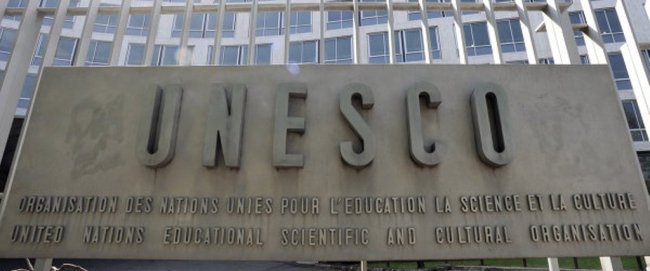
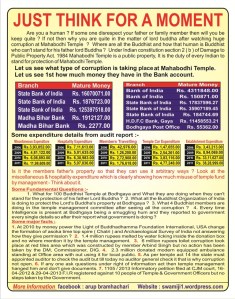

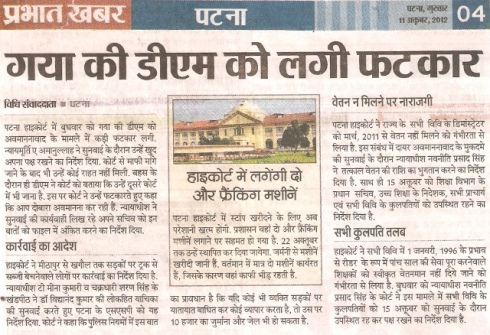
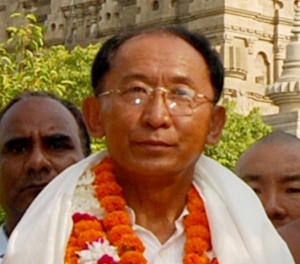
![297207_109847895795754_10990166_n[2]](https://swamiji1.files.wordpress.com/2013/04/297207_109847895795754_10990166_n2.jpg?w=490)
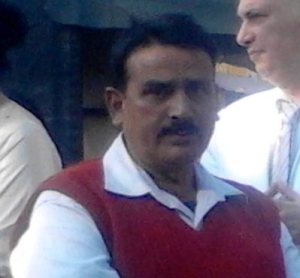
![304867_270939082930812_1909962848_n[1]](https://swamiji1.files.wordpress.com/2013/04/304867_270939082930812_1909962848_n1.jpg?w=490)
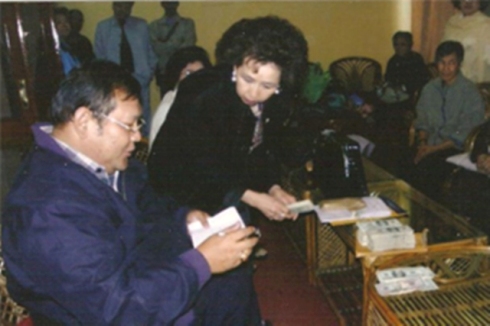
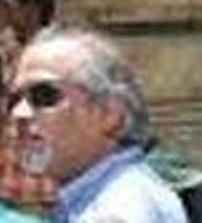
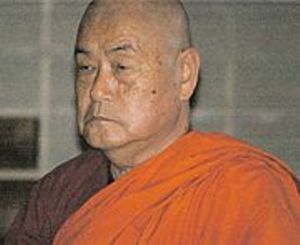
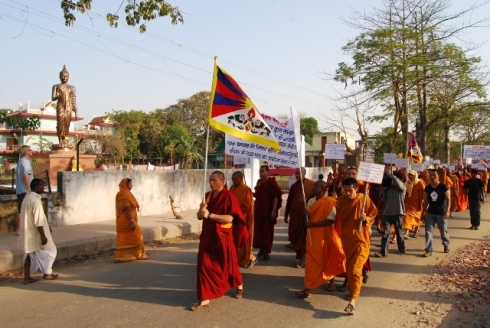
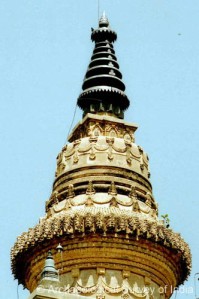
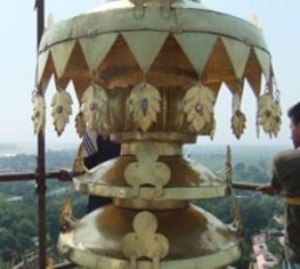
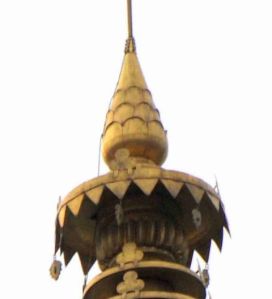
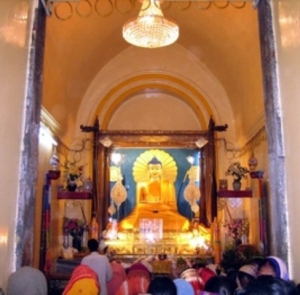
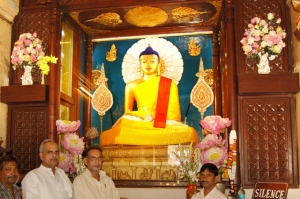
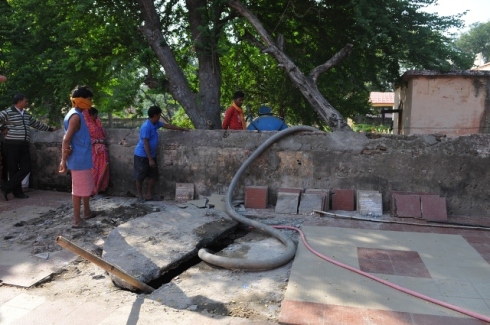
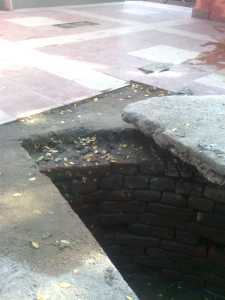
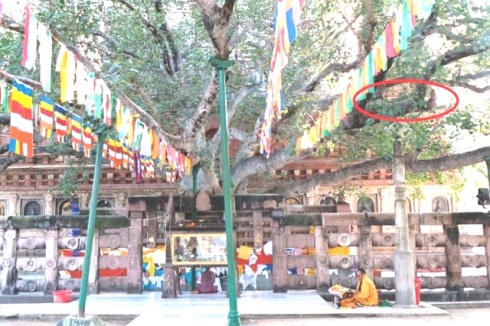
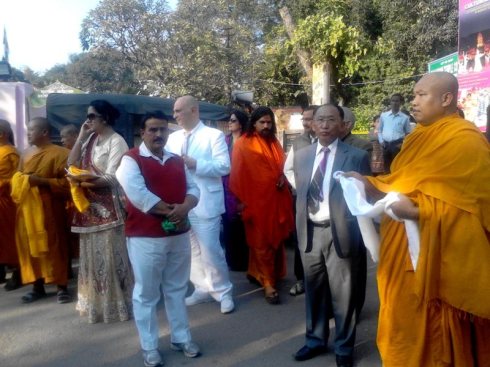
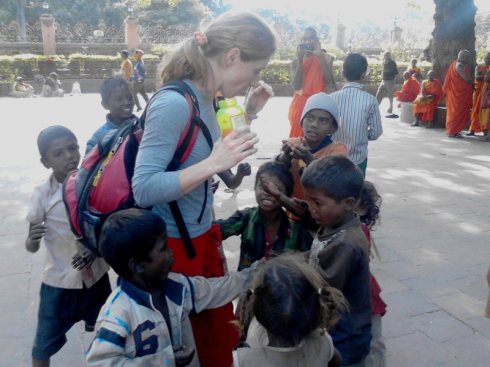
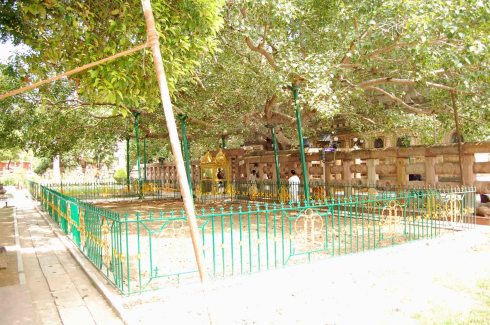
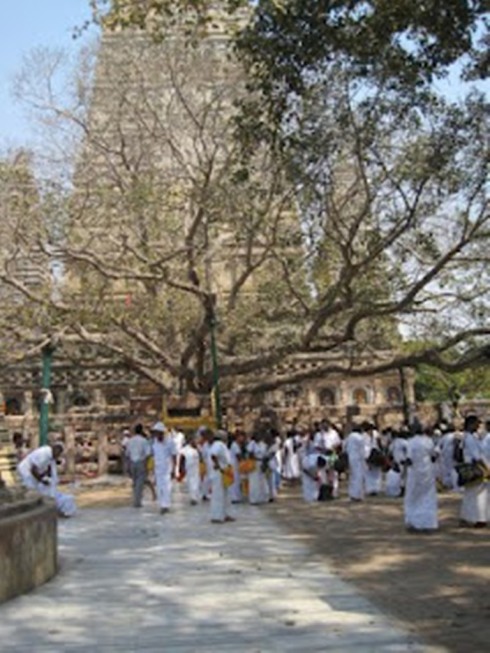
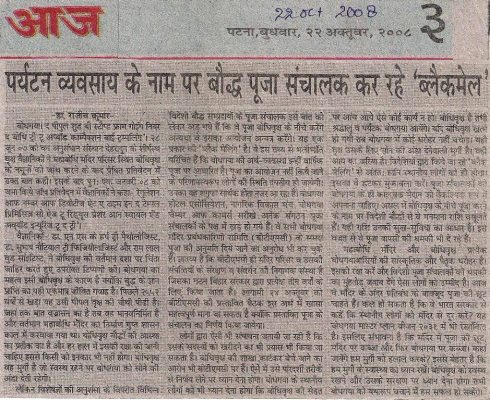
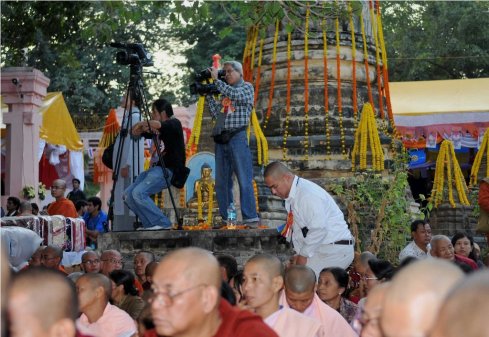
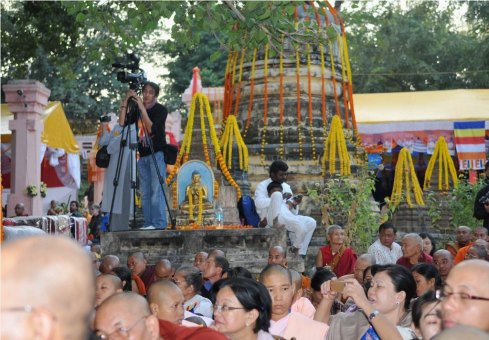
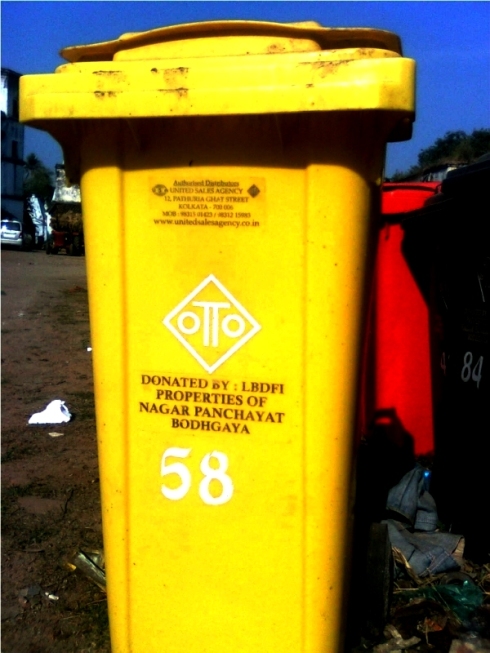
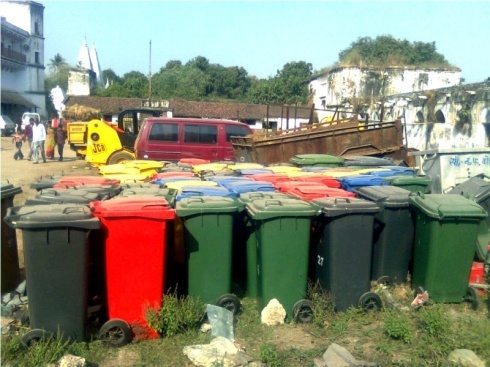
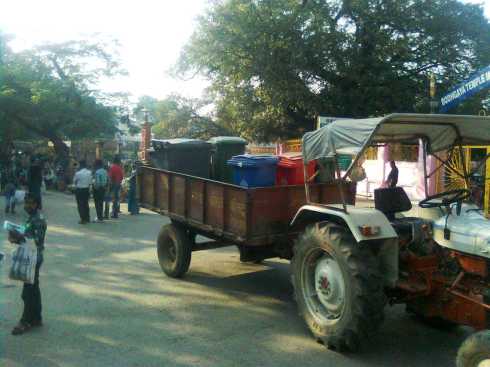
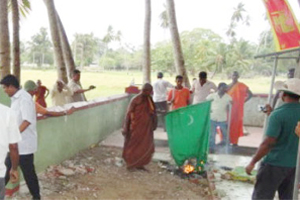
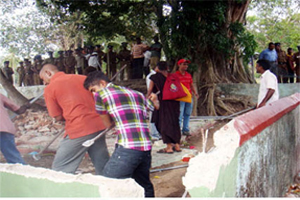
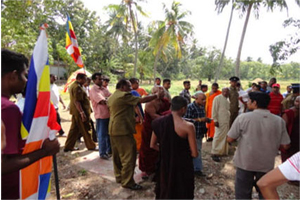
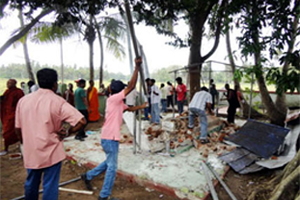
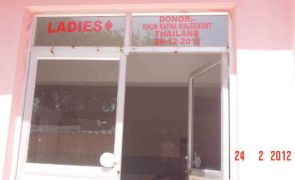
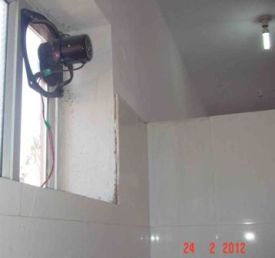

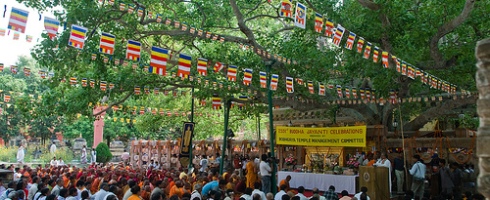
![DSC_2389[1]](https://swamiji1.files.wordpress.com/2012/04/dsc_23891.jpg?w=150&h=100)

